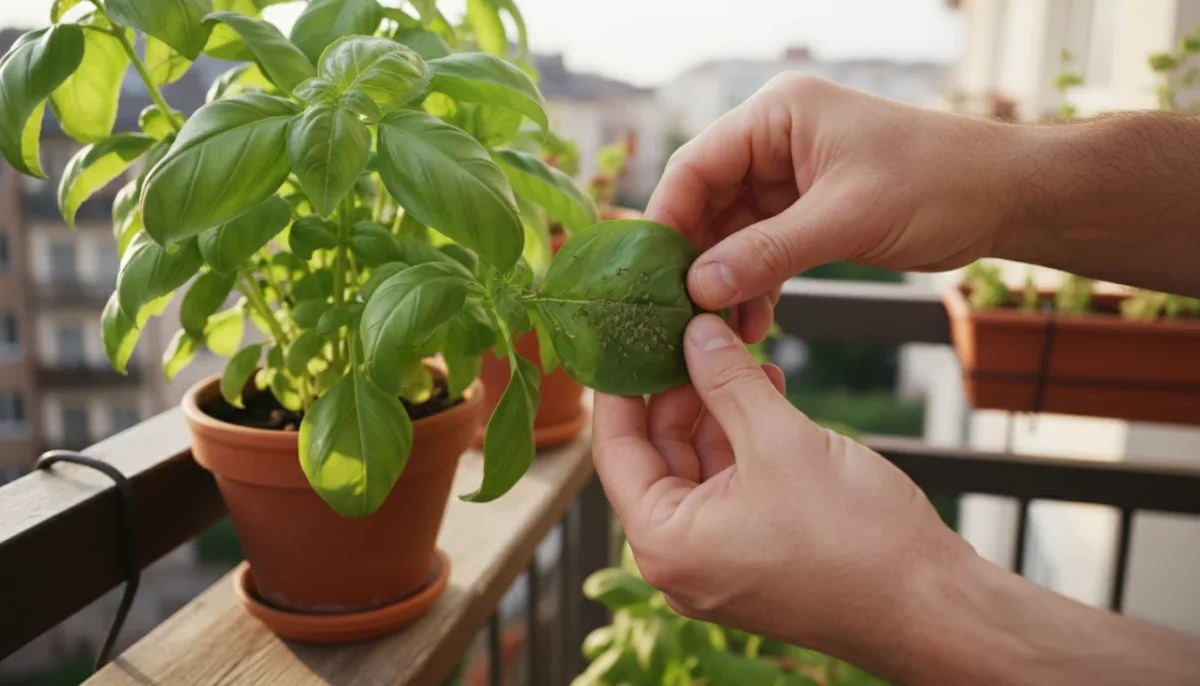For research-based plant care guidance, visit
Royal Horticultural Society (RHS),
University of Minnesota Extension,
Cornell Garden-Based Learning and
UF/IFAS Gardening Solutions.
Disclaimer: This article is for informational purposes only and is not a substitute for professional advice. Consult local extension services for region-specific recommendations.
Your container garden brings joy and beauty to your small space, but even the healthiest plants can occasionally encounter uninvited guests: pests. You want to keep your plants thriving without resorting to harsh chemicals that harm beneficial insects, your family, or the environment. This guide provides practical, actionable strategies for natural pest control, helping you maintain a vibrant, pest-free container garden using sustainable, eco-friendly methods. You will discover simple routines, effective remedies, and how to build strong, resilient plants that naturally resist infestations. Embrace natural gardening and empower your plants to flourish.
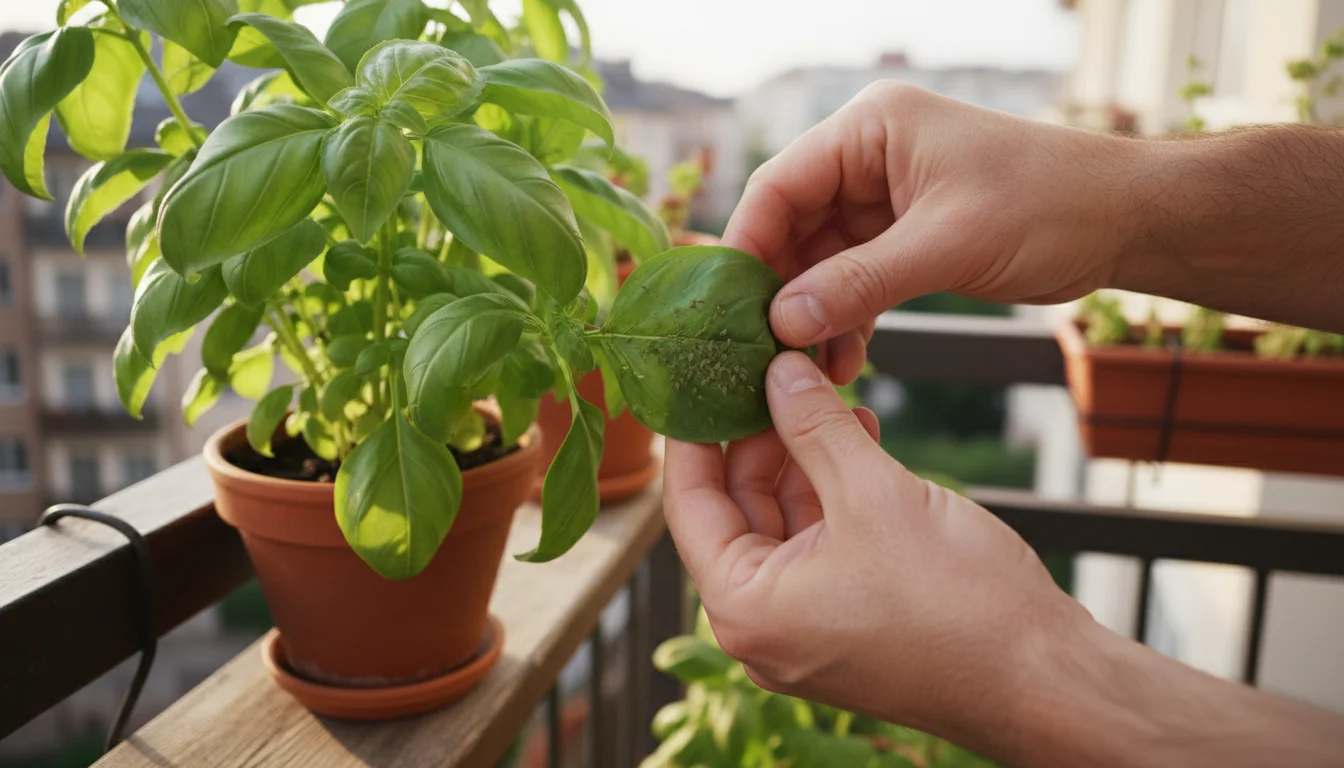
Understanding Common Container Garden Pests
Successful organic pest control begins with identifying your enemy. Knowing which pest you face allows you to choose the most effective natural gardening solution. Let us explore the common culprits you might encounter in your container garden and learn how to recognize them.
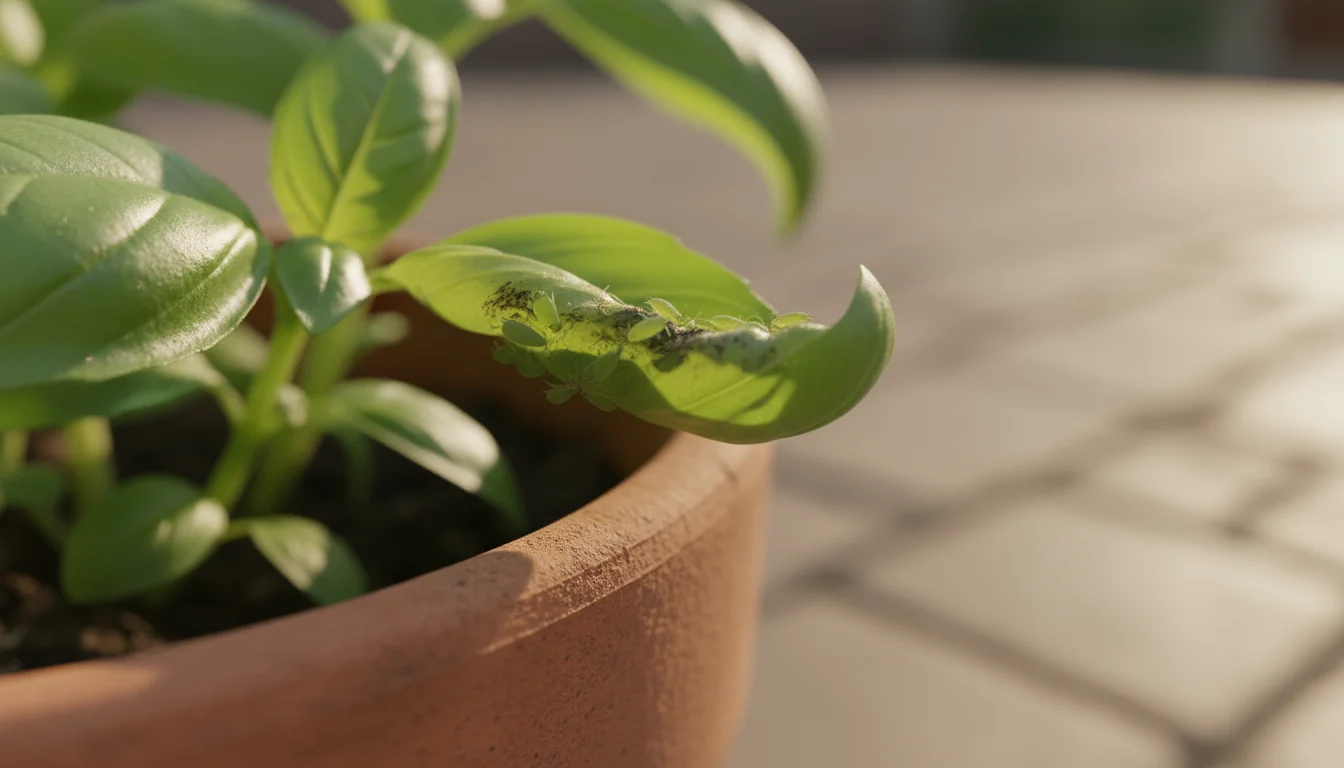
Aphids: The Sap Suckers
Aphids are small, pear-shaped insects, often green, black, yellow, or pink. You usually find them clustered on new growth, leaf undersides, and flower buds. They pierce plant tissue and suck out the sap, causing leaves to curl, yellow, or distort. They also excrete a sticky substance called honeydew, which can lead to sooty mold growth. A single aphid can reproduce rapidly, so early detection is crucial.
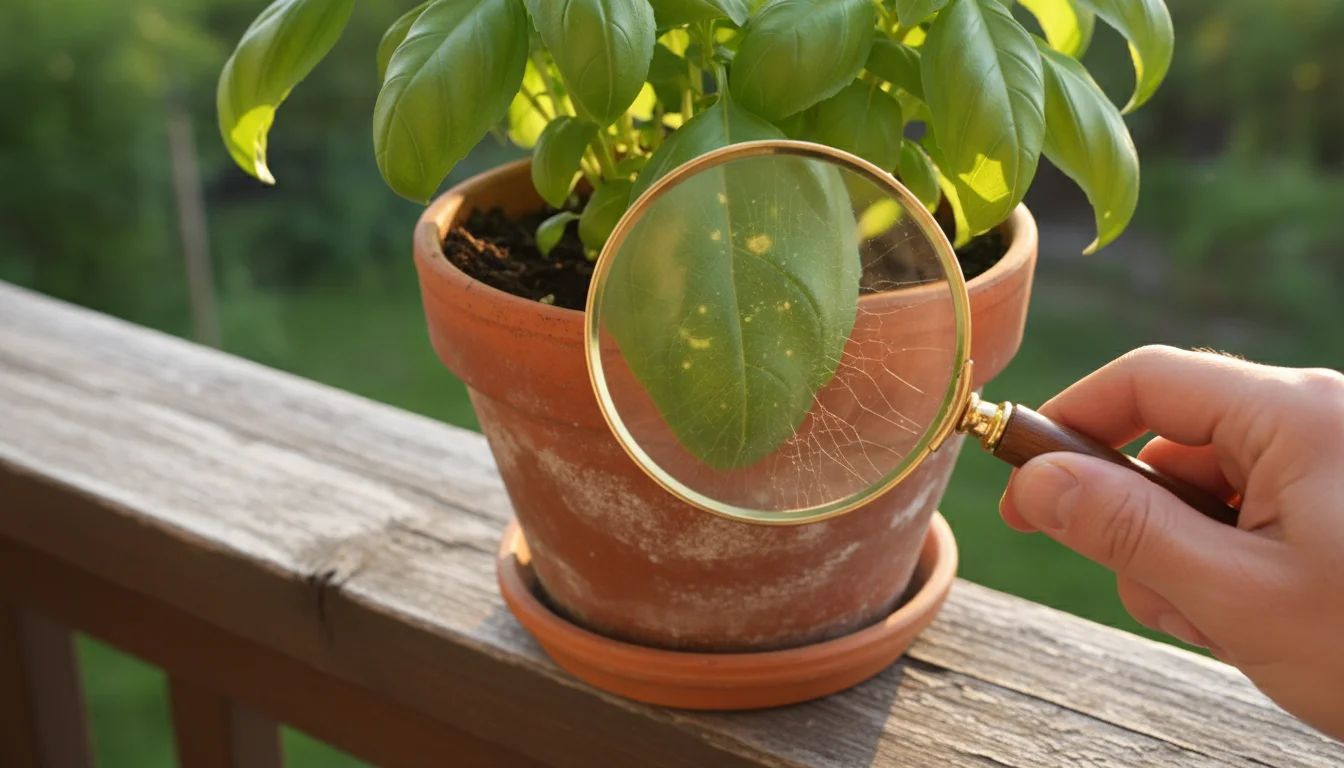
Spider Mites: Tiny Weavers
Spider mites are minute, eight-legged arachnids, barely visible to the naked eye. You typically notice their presence by fine webbing on leaves, especially in dry, warm conditions. Plants infested with spider mites develop tiny yellow or stippled dots on their leaves, which eventually turn bronze and drop. Inspect leaf undersides with a magnifying glass to confirm their presence.
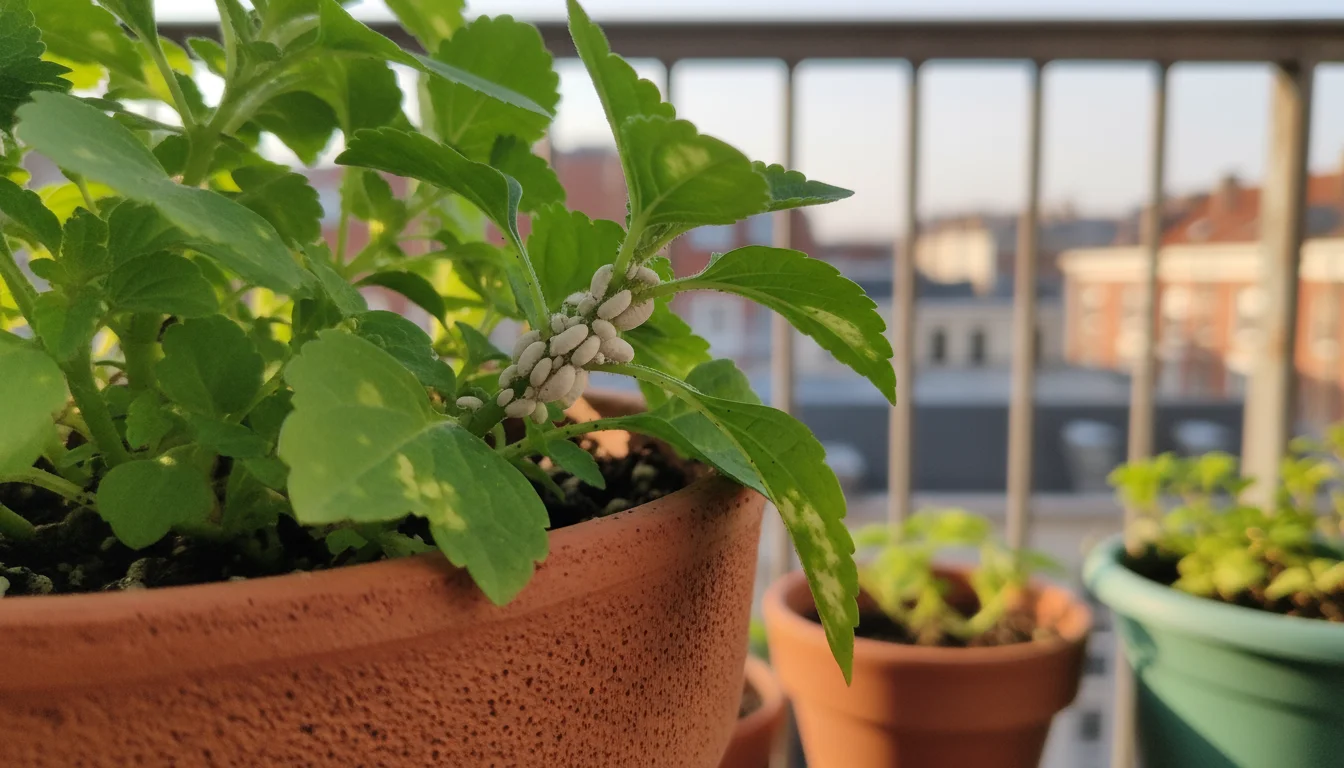
Mealybugs: Cottony Invaders
Mealybugs are soft-bodied, oval insects covered in a white, cottony, waxy substance. They often cluster in leaf axils, along stems, and on the undersides of leaves. Like aphids, mealybugs feed on plant sap, causing stunted growth, yellowing, and leaf drop. Their waxy coating protects them, making them a bit more challenging to eradicate without persistent effort.
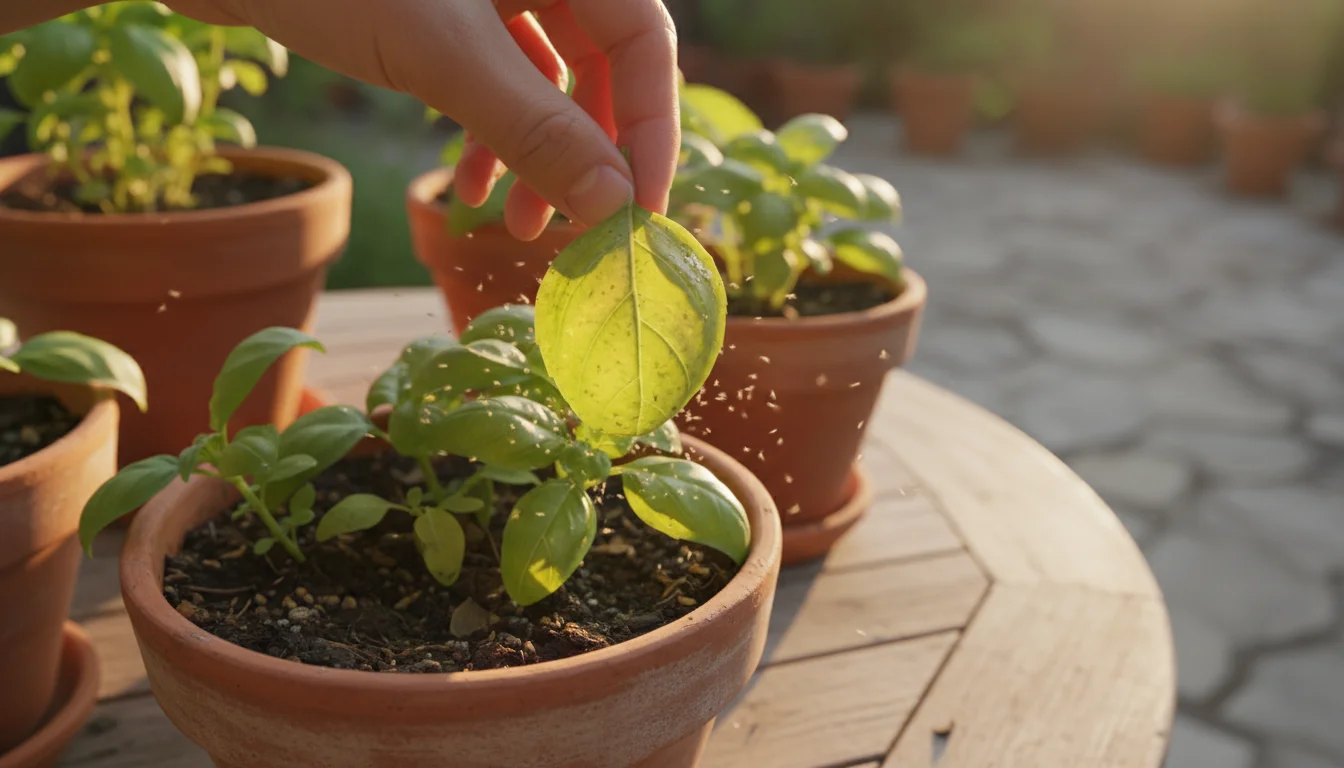
Whiteflies: Flying Dust Specks
Whiteflies are tiny, white, winged insects that flutter up in a cloud when you disturb an infested plant. They usually congregate on the undersides of leaves, sucking sap and weakening the plant. You will see yellowing leaves and, like aphids and mealybugs, their sticky honeydew can promote sooty mold.
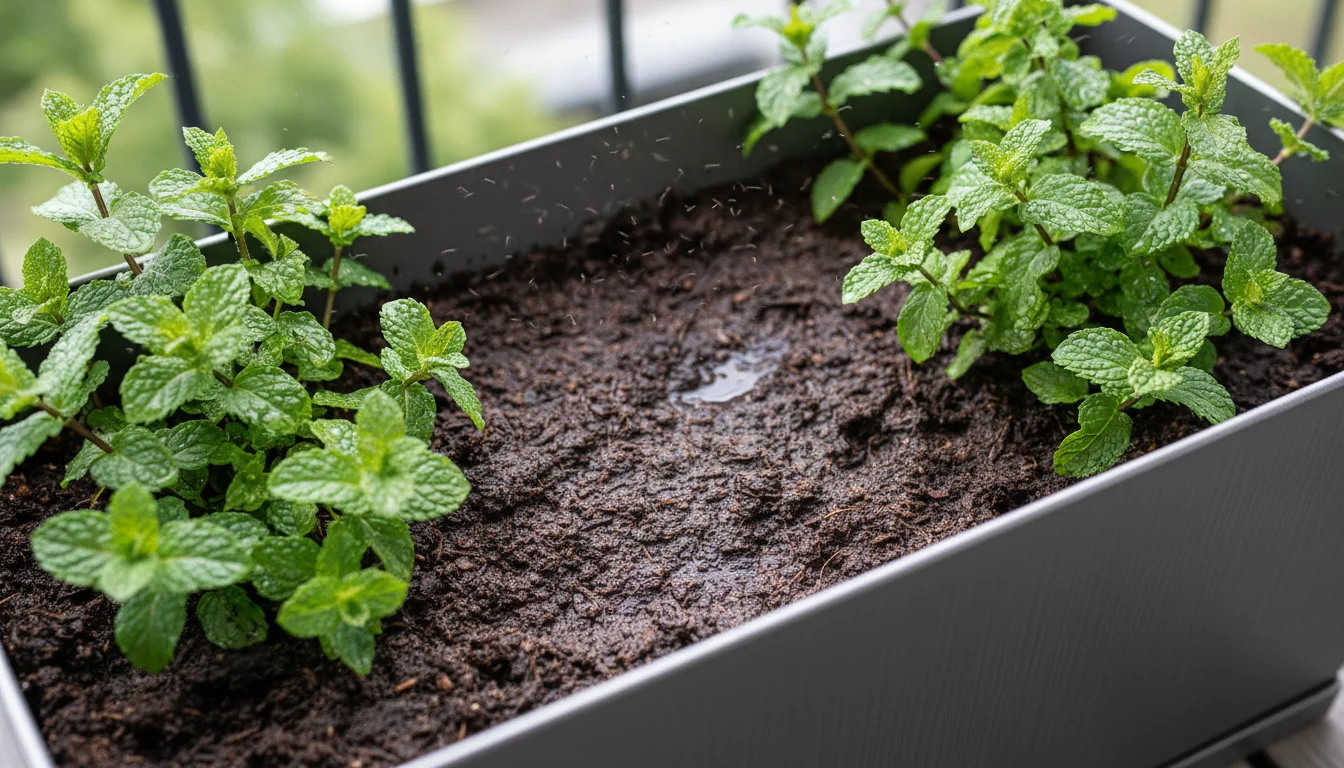
Fungus Gnats: Annoying but Harmless Adults
Fungus gnats are small, dark, mosquito-like flies that buzz around the soil surface of your container plants. While the adult gnats are primarily a nuisance, their larvae live in the soil and feed on decaying organic matter, fungi, and sometimes delicate plant roots, especially in seedlings. Overwatering often leads to fungus gnat problems, as they thrive in consistently moist soil.
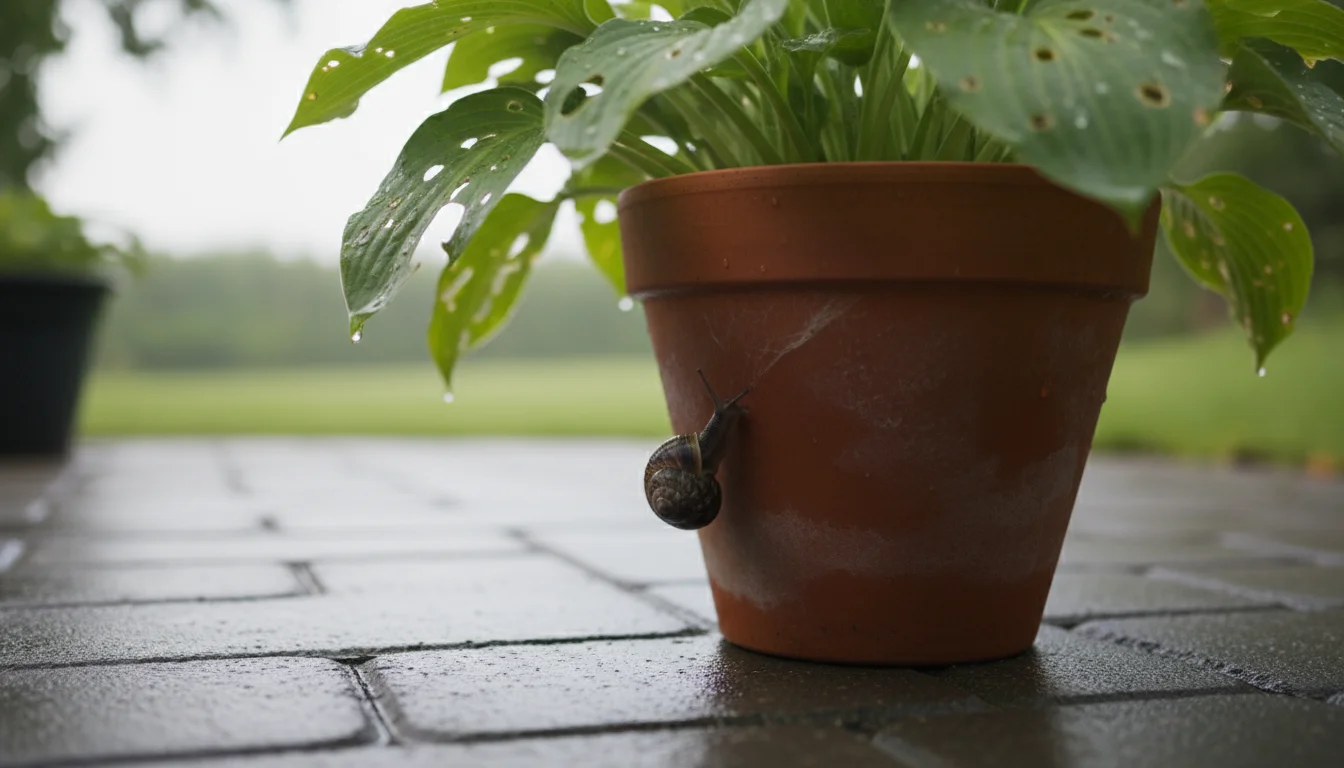
Slugs and Snails: Nocturnal Nibblers
These slimy mollusks leave irregular holes in leaves and trails of silvery slime. They prefer moist, cool conditions and emerge at night to feast on tender foliage. In container gardens, they might hide under pots or in thick groundcover during the day.
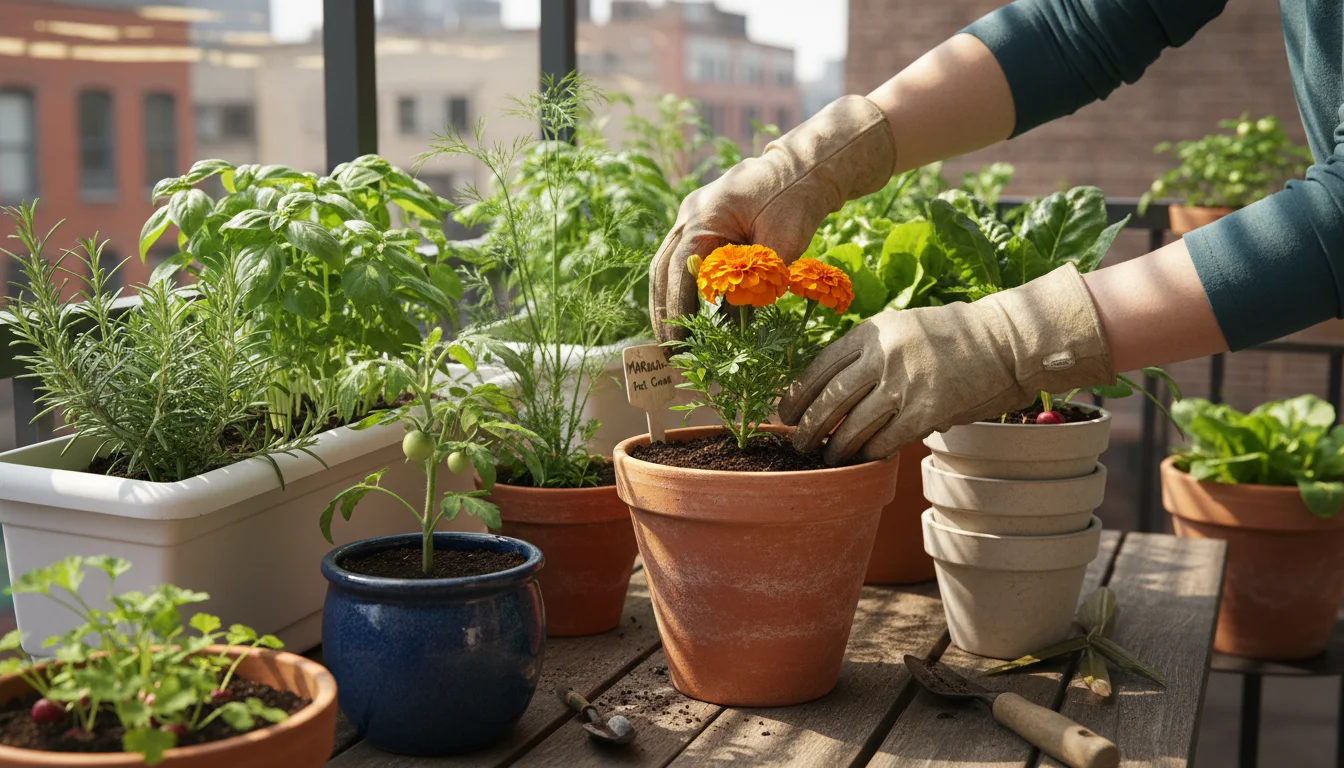
Prevention: Your First Line of Defense
Preventing pests from taking hold saves you significant effort in the long run. By implementing proactive measures, you create an environment where pests struggle to thrive and your plants remain healthy and strong. This cornerstone of natural gardening is simpler than you might imagine.
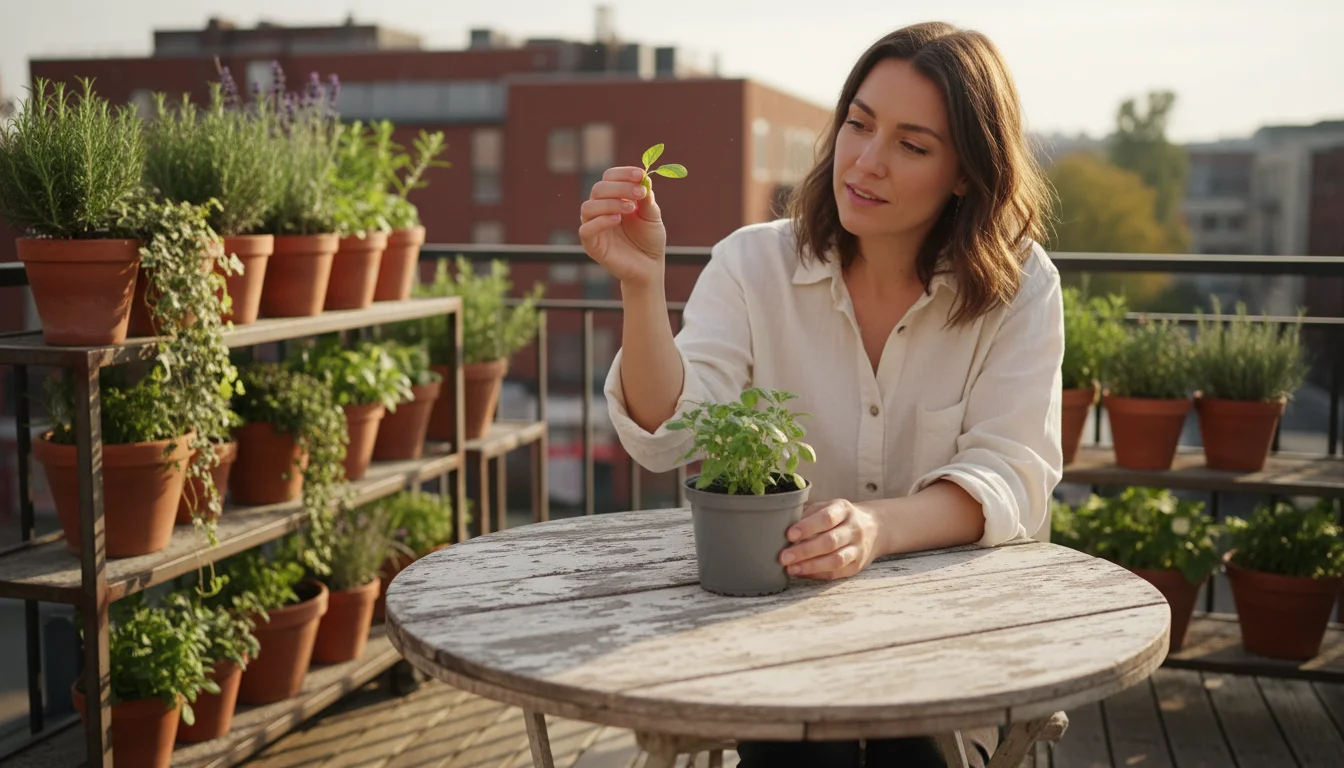
Quarantine New Plants
Always isolate new plants for at least two weeks before introducing them to your existing collection. Pests like spider mites, mealybugs, and aphids often hitchhike on new arrivals. During this quarantine period, closely inspect the new plant daily for any signs of pests. This simple step prevents an outbreak from spreading to your entire garden.
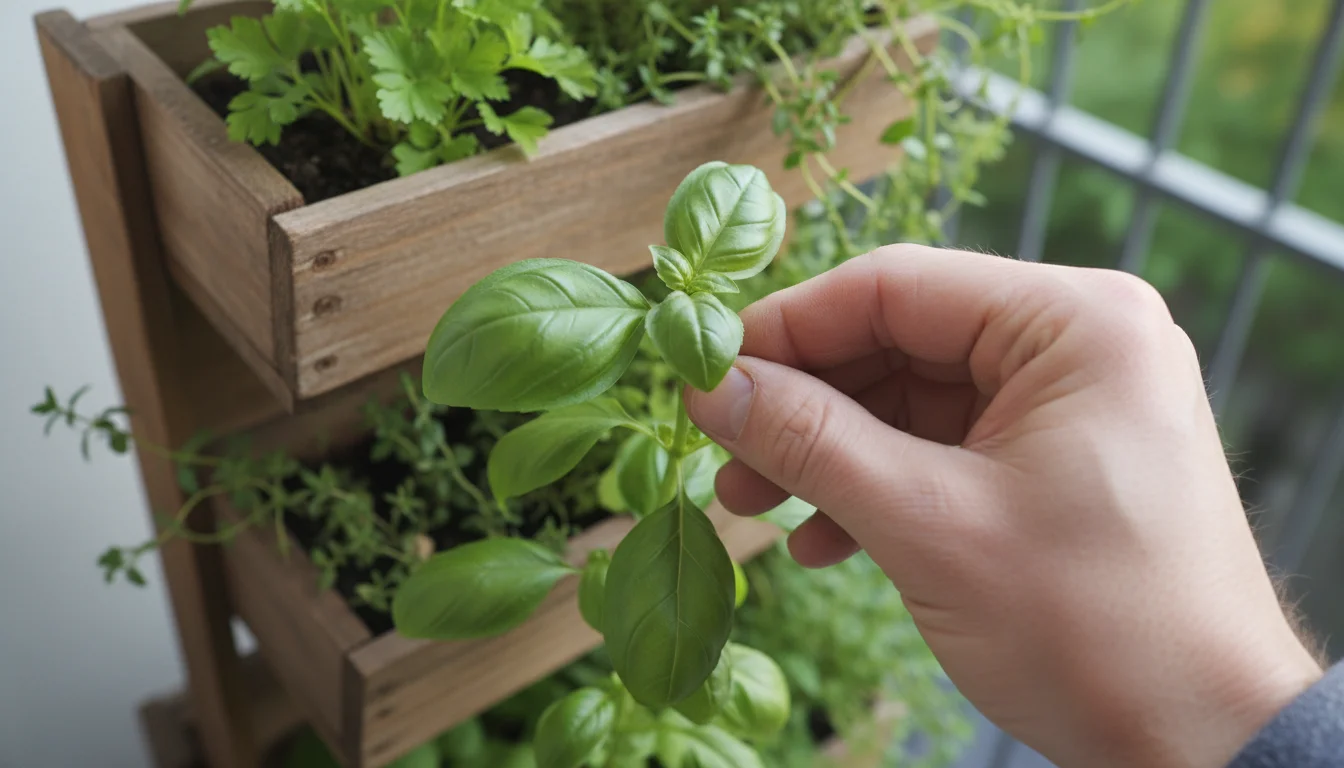
Inspect Plants Regularly
Make a habit of performing quick visual checks whenever you water or interact with your plants. Look under leaves, along stems, and in crevices. Early detection allows you to address a small problem before it becomes a major infestation. This vigilance is your most powerful tool in organic pest control.
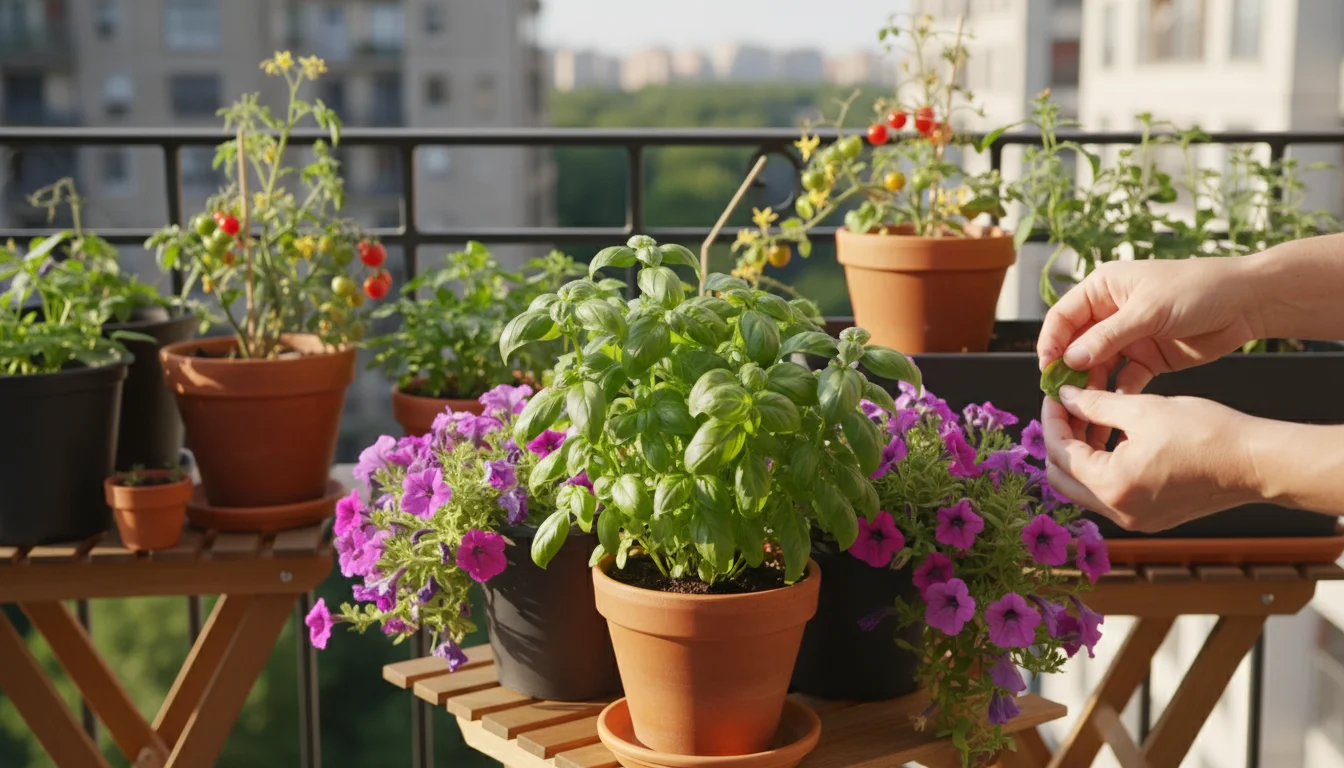
Ensure Proper Air Circulation
Good airflow discourages many pests and fungal diseases. Space your container plants adequately to allow air to move freely around them. Trim away crowded or yellowing foliage to improve circulation, especially in dense plants. Stagnant, humid conditions create ideal breeding grounds for pests like spider mites and whiteflies.
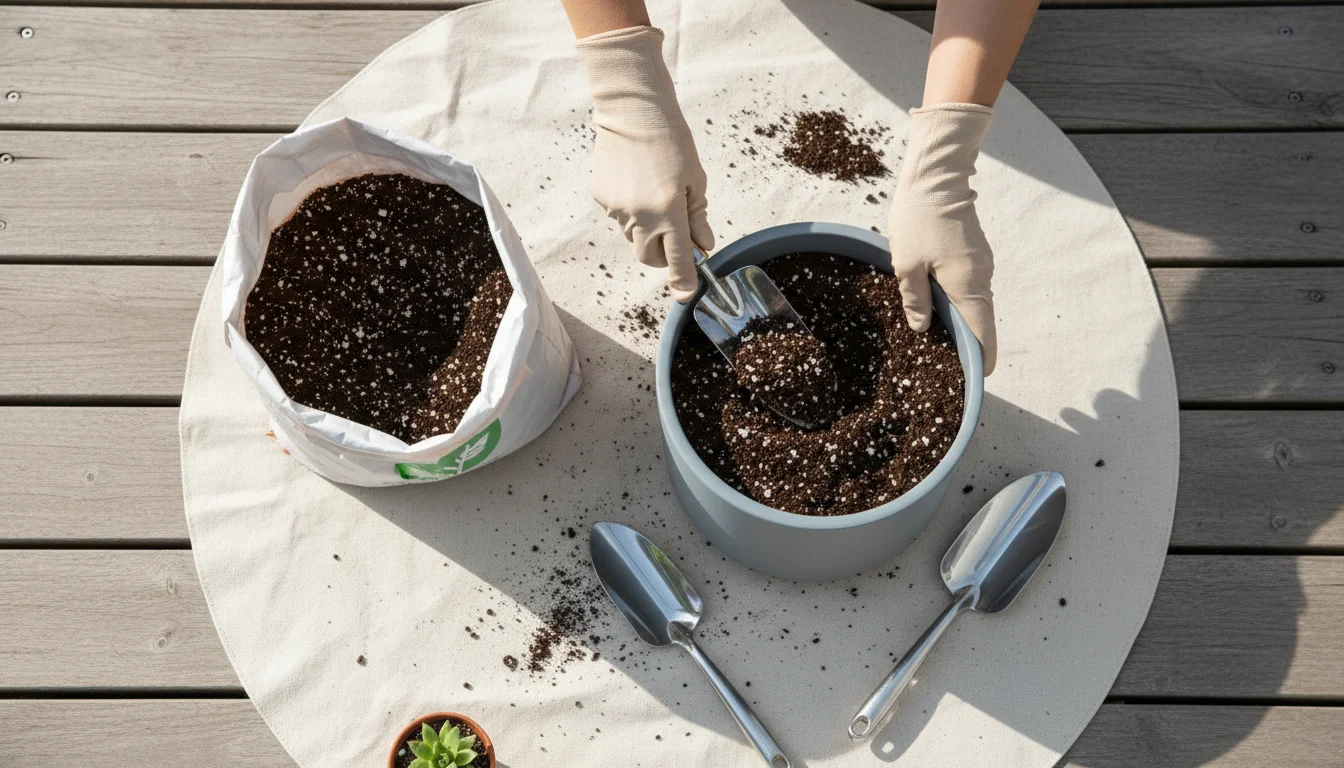
Use High-Quality, Sterile Potting Mix
Start with a fresh, peat-free potting mix specifically formulated for containers. Avoid using garden soil, which can contain pest eggs, weed seeds, and disease pathogens. A good quality potting mix provides excellent drainage and aeration, discouraging soil-borne pests like fungus gnats. Many modern mixes also include beneficial microbes that support root health, contributing to overall plant resilience. University of Minnesota Extension provides excellent guidance on potting media.
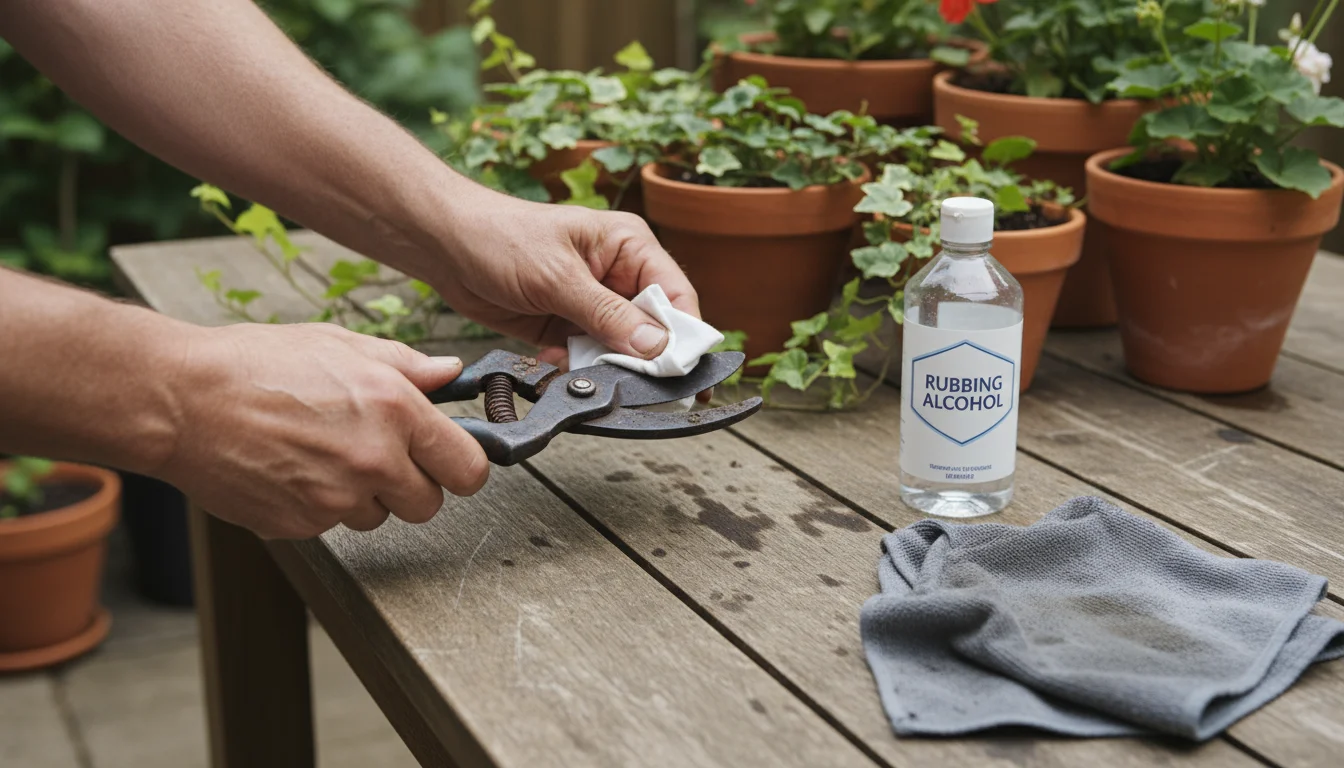
Keep Your Gardening Tools Clean
Sanitize your pruners and other tools between plants, especially if you suspect a plant has a pest or disease. A quick wipe with rubbing alcohol or a 10% bleach solution prevents the spread of pathogens and pest eggs from one plant to another.
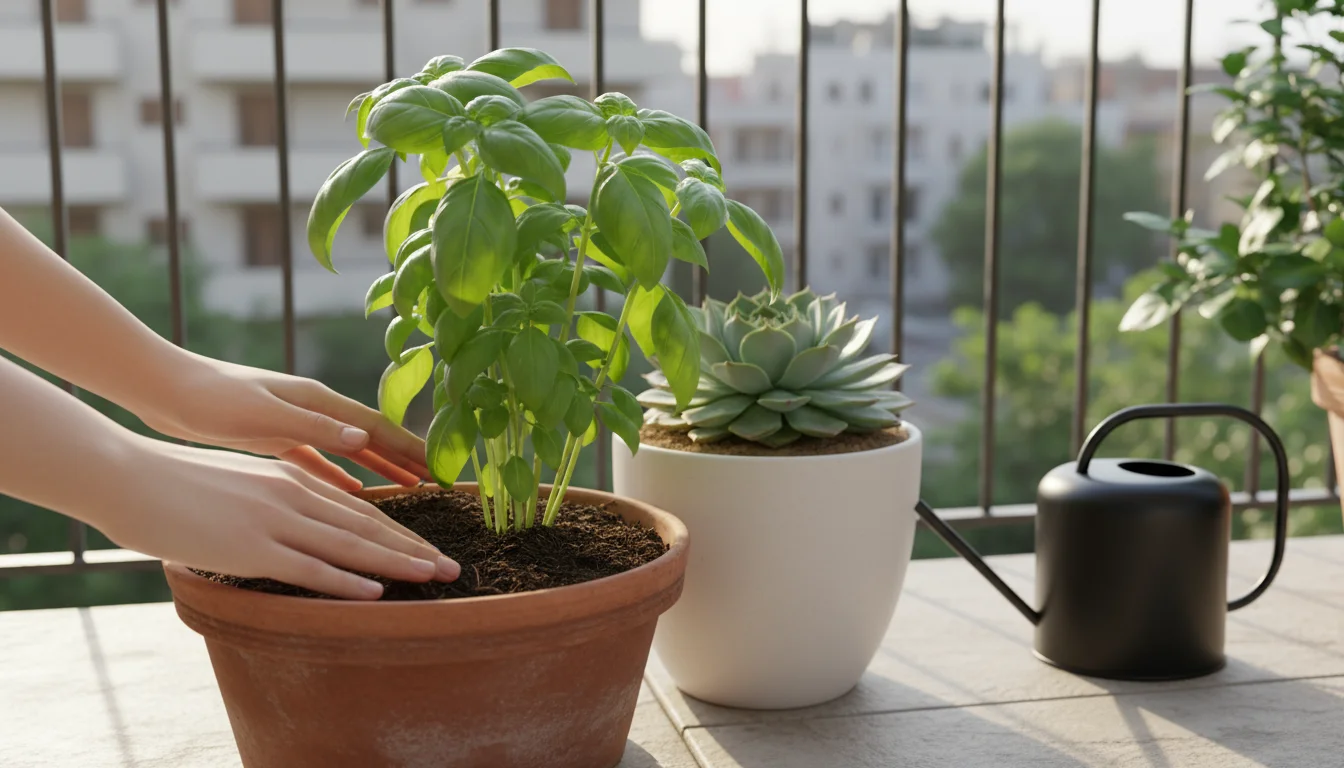
Water Wisely
Overwatering creates an excessively moist environment, which fungus gnats adore. Allow the top inch or two of soil to dry out between waterings for most plants. For succulents and cacti, let the soil dry out even more thoroughly. Proper watering practices also prevent root rot, which weakens plants and makes them more susceptible to pest attack. On the other hand, underwatering stresses plants, making them vulnerable to pests like spider mites that thrive in dry conditions. Find the right balance for each plant.
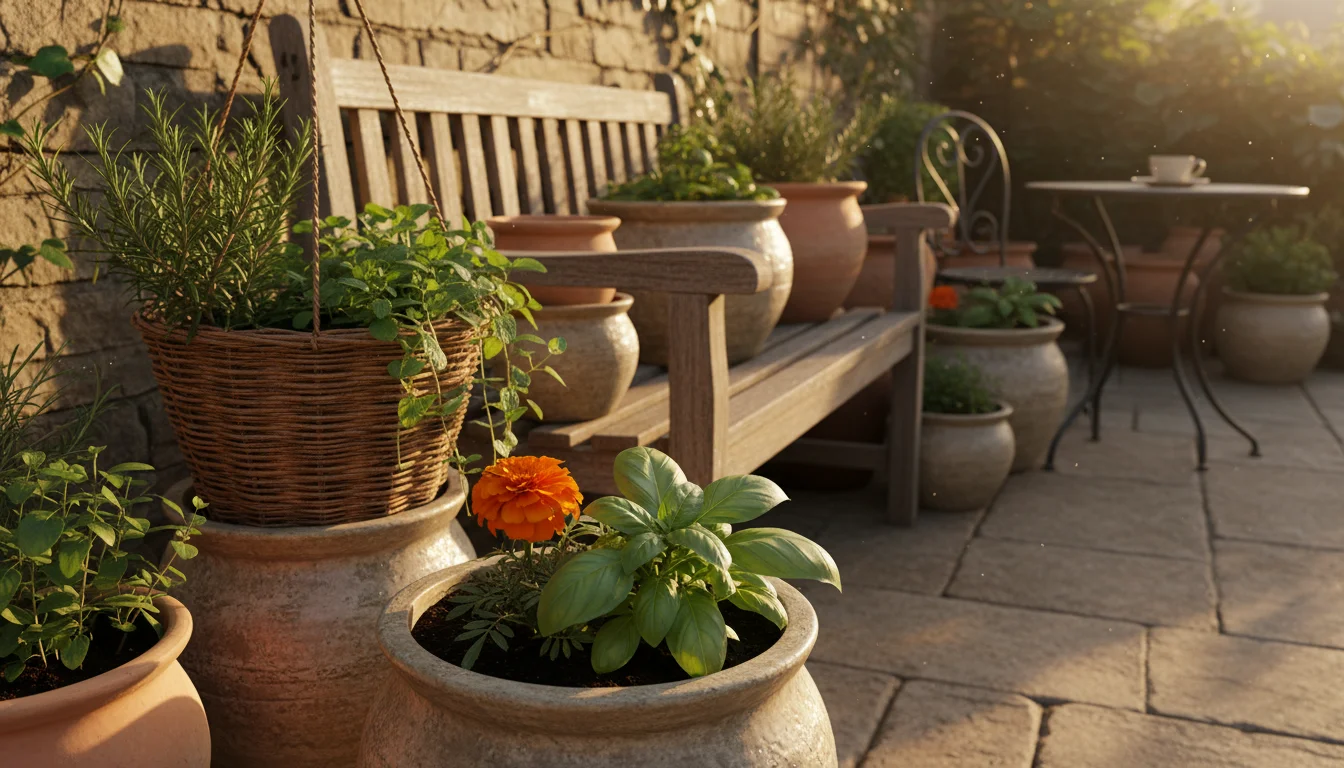
Consider Companion Planting
Some plants naturally deter pests or attract beneficial insects. For example, marigolds (Tagetes spp.) are known to repel nematodes and some flying insects. Herbs like basil, rosemary, and mint can also deter various pests. Interplanting these in your container arrangements offers a natural layer of protection. This practice is a wonderful example of natural gardening principles at work.
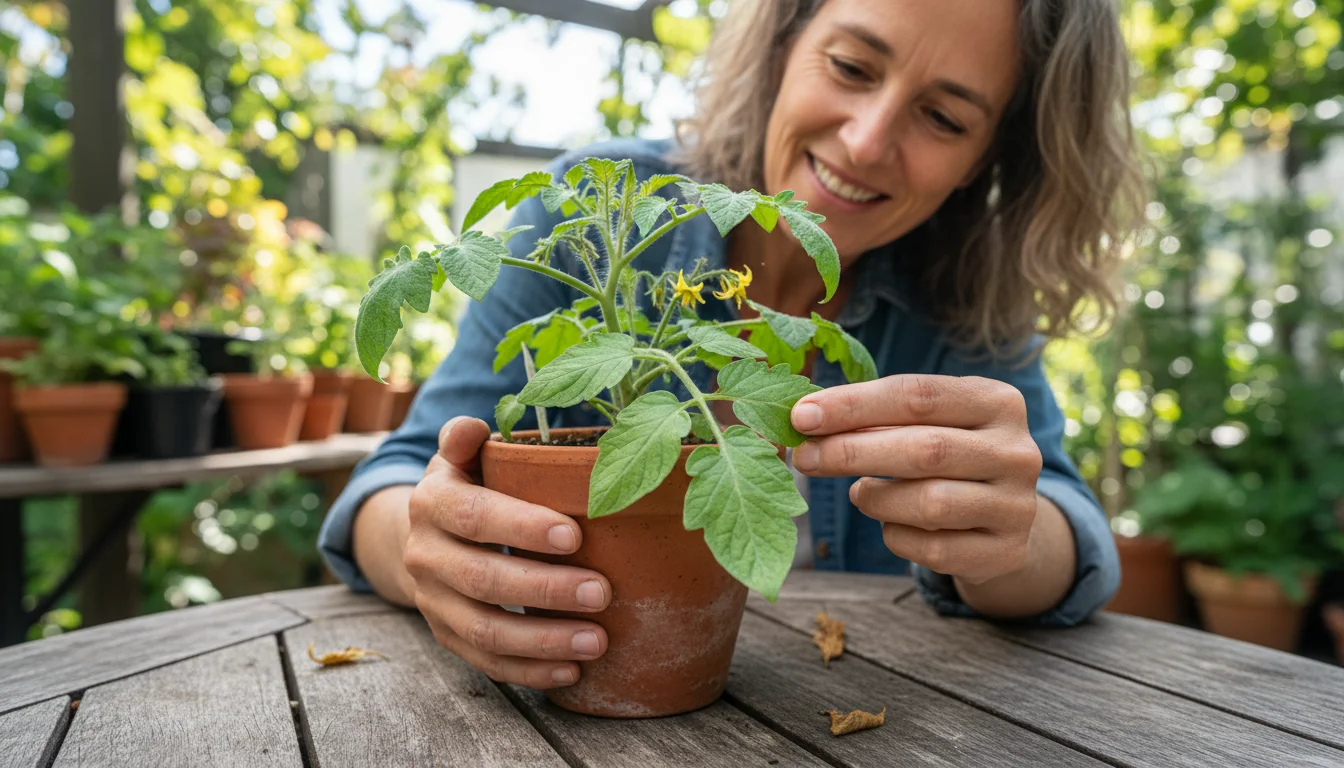
Early Detection and Consistent Observation
Your eyes and hands are your best tools for organic pest control. Regular, thorough inspection allows you to catch problems when they are small and easily managed, often before they escalate into significant infestations. Make these checks a non-negotiable part of your plant care routine.
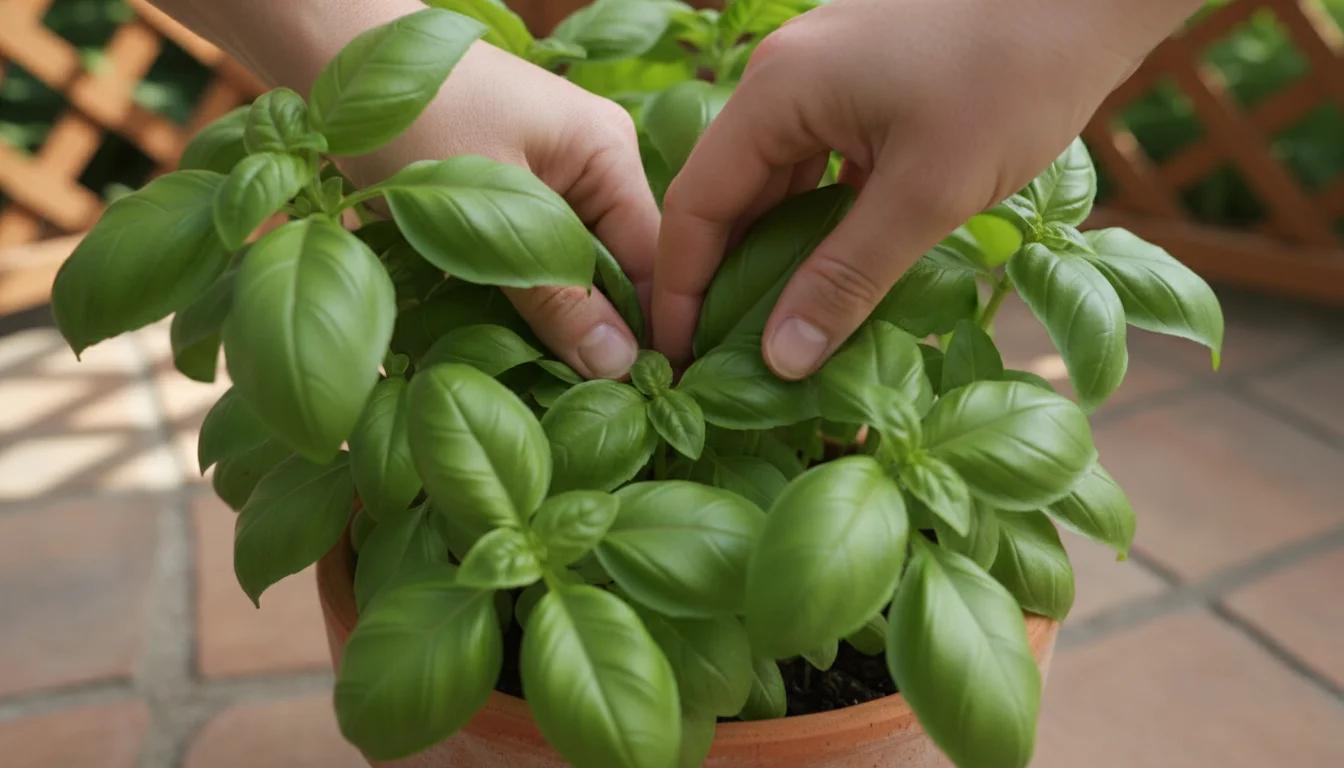
The Weekly Health Check
Dedicate a few minutes each week to a comprehensive plant inspection. This goes beyond a casual glance.
- Examine Leaf Surfaces: Look closely at the top and bottom of every leaf. Are there any tiny spots, discoloration, sticky residue (honeydew), or webbing?
- Inspect Stems and Axils: Check where leaves meet the stem, and along the stem itself, for any unusual growths, cottony masses (mealybugs), or tiny insects.
- Check the Soil Surface: Look for fungus gnats flying up or tiny larvae near the soil.
- Feel the Leaves: Healthy leaves usually feel firm. Sticky leaves indicate honeydew, a sign of sap-sucking pests.
- Observe Overall Vigor: Is the plant growing normally? Are new leaves unfurling without distortion? Stunted growth, drooping, or sudden yellowing can signal pest stress or other underlying issues.
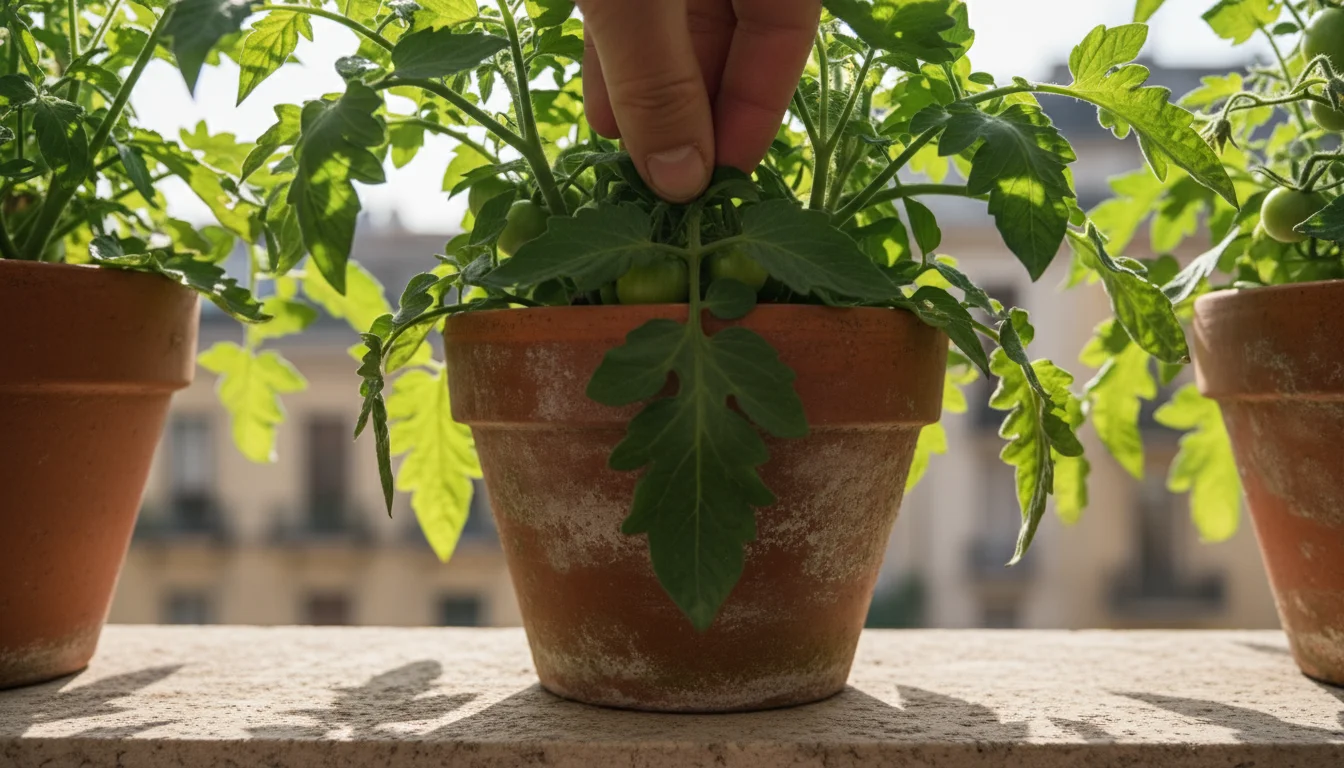
Understand Pest Hot Spots
Pests often prefer certain areas. Aphids and mealybugs love new, tender growth. Spider mites hide on leaf undersides, especially near the stem. Whiteflies gather on the undersides of mature leaves. Knowing these preferences guides your inspection, making it more efficient and effective.
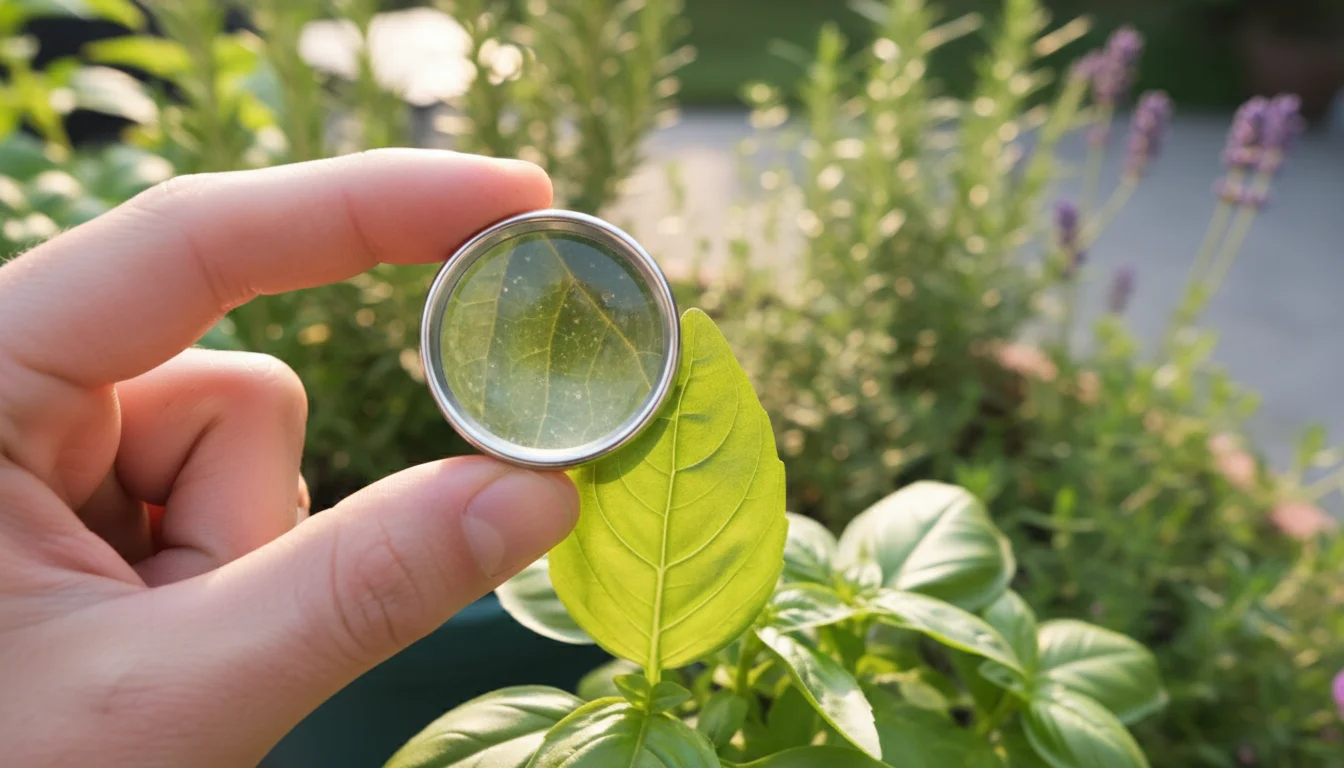
Use a Magnifying Glass
Many pests, like spider mites, are minuscule. A small magnifying glass (even a cheap jeweler’s loupe) helps you spot these tiny invaders before they become visible to the naked eye. This tool is invaluable for confirming suspected pest activity and for identifying the exact type of pest you are dealing with, crucial for targeted natural pest control.
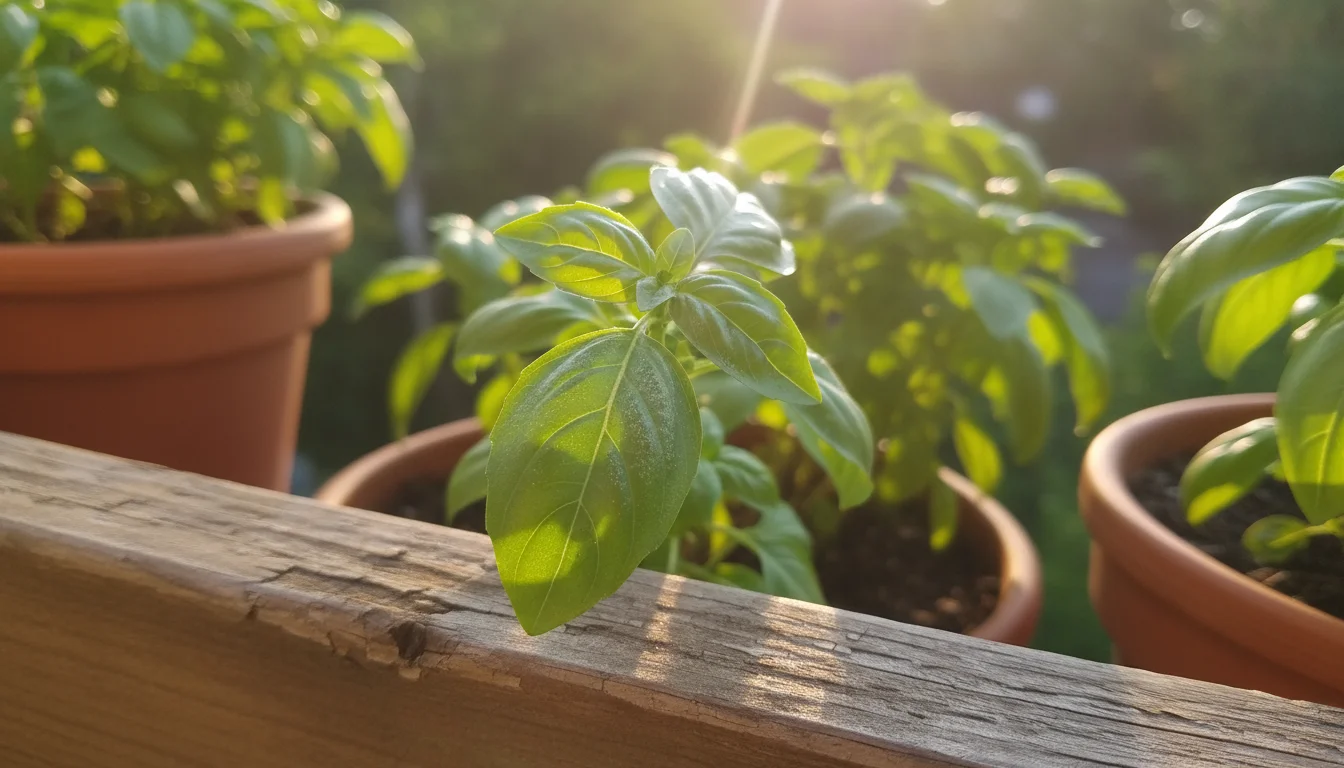
Identify Early Symptoms
Learn the tell-tale signs of common pests:
- Stippling: Tiny yellow or silver dots on leaves, often a sign of spider mites or thrips.
- Curled or Distorted Leaves: Frequently caused by aphids feeding on new growth.
- Sticky Residue (Honeydew): A clear, sugary excretion from aphids, mealybugs, or whiteflies. This can lead to black sooty mold.
- Webbing: Fine, delicate webs, especially between leaves or on new growth, indicate spider mites.
- Sudden Leaf Drop or Yellowing: A general sign of plant stress, which can include heavy pest infestation.
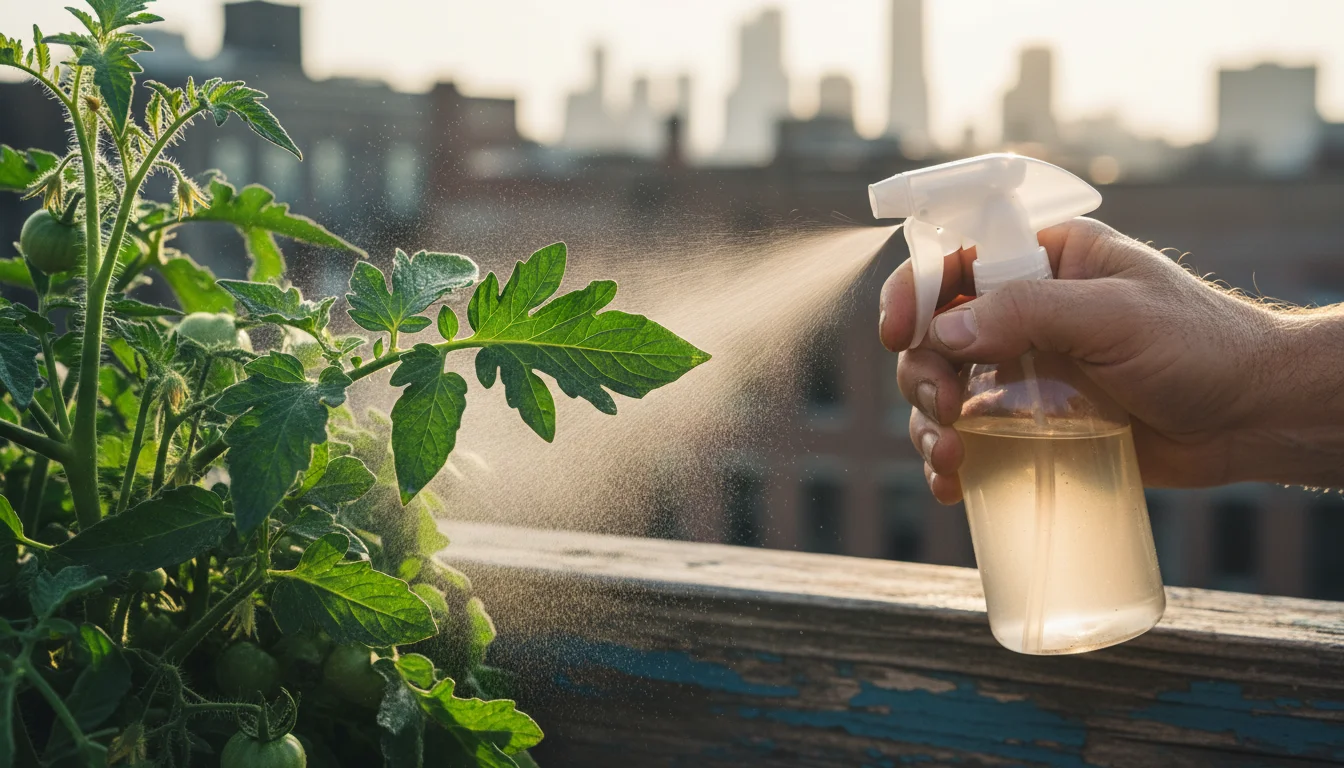
Effective Natural Remedies for Specific Pests
When prevention fails or you discover a nascent infestation, natural pest control offers powerful, non-toxic solutions. These organic pest control methods are gentle on your plants and the environment, focusing on targeting pests directly without harsh chemicals. Always test any new treatment on a small, inconspicuous part of your plant first to ensure it does not cause damage.
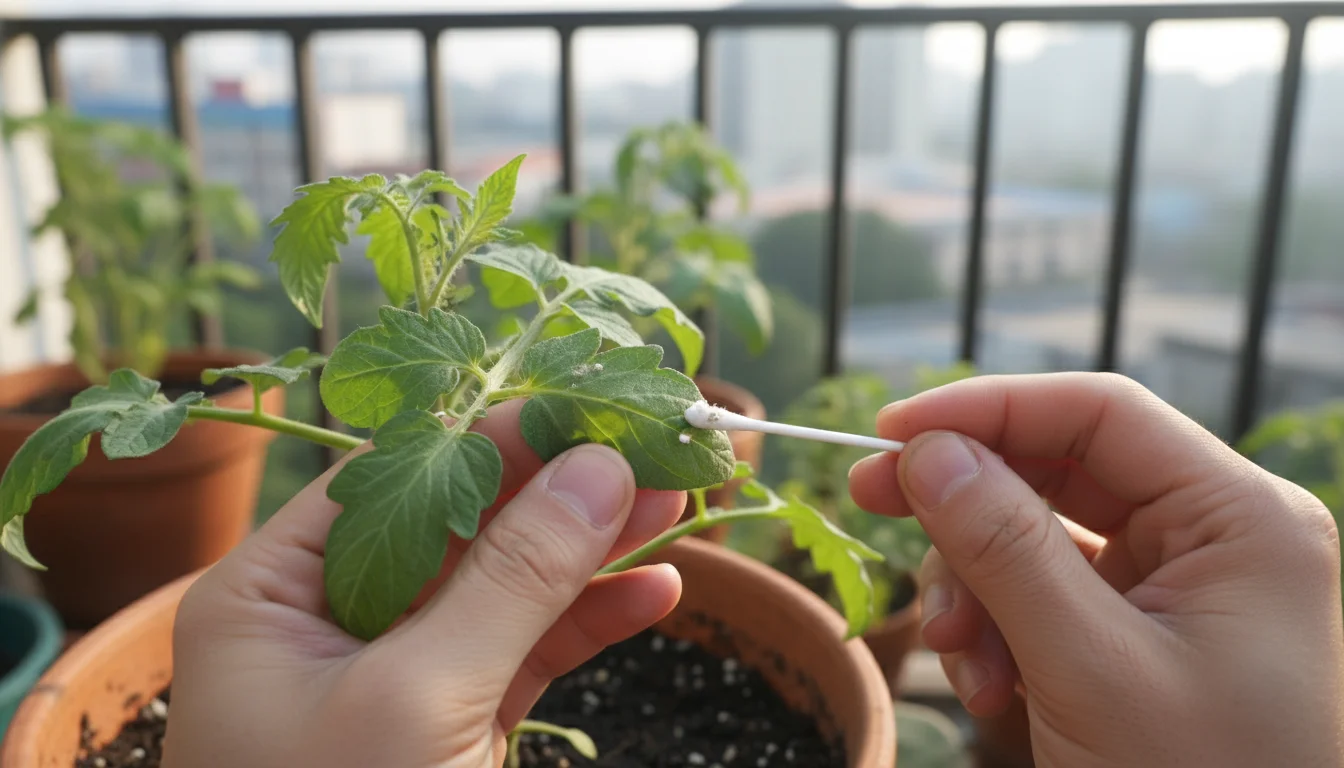
Manual Removal: Your Hands-On Approach
For small infestations, your hands provide the simplest solution.
- Wiping: Use a damp cloth or cotton swab dipped in rubbing alcohol to gently wipe away mealybugs, scale insects, and aphids. The alcohol dissolves their waxy coating, making them vulnerable.
- Pruning: If only a few leaves or a single stem are heavily infested, prune off the affected parts and dispose of them in a sealed bag. Sterilize your pruners afterward.
- Rinsing: For aphids, spider mites, and whiteflies, a strong blast of water from a spray bottle or garden hose can dislodge them. Direct the spray to the undersides of leaves. Repeat every few days until the pests are gone. This method is surprisingly effective for light to moderate infestations and provides instant relief for your plant.
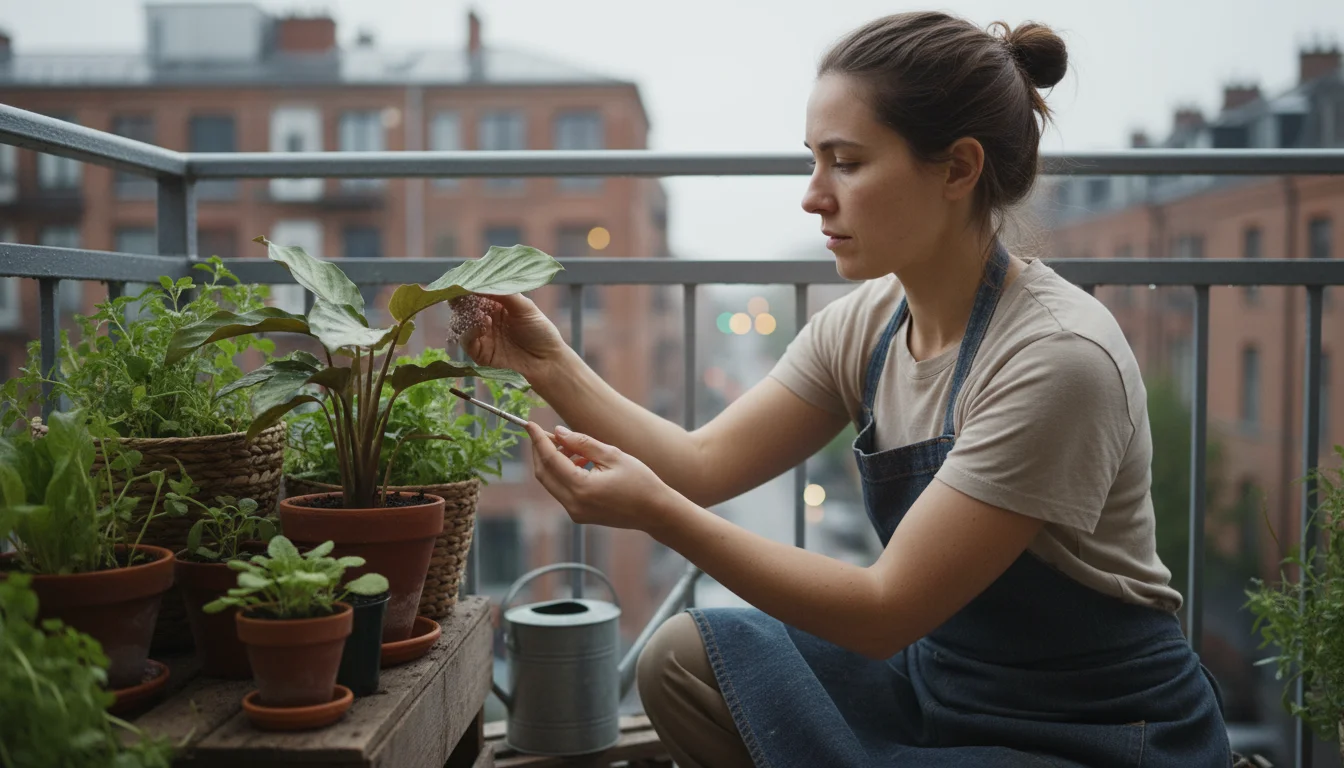
Neem Oil: The Multi-Tasking Marvel
Neem oil, extracted from the neem tree, is a cornerstone of natural gardening pest management. It acts as an antifeedant, growth disruptor, and repellent. Pests that ingest or contact it lose their appetite, cannot reproduce, and eventually die. Neem oil works effectively against aphids, spider mites, whiteflies, mealybugs, and many other soft-bodied insects.
- Mix: Combine 1-2 tablespoons of cold-pressed neem oil with 1 teaspoon of mild liquid soap (such as castile soap, which acts as an emulsifier) per gallon of water.
- Shake Well: Neem oil and water separate, so shake the mixture frequently during application.
- Apply: Thoroughly spray all plant surfaces, including the undersides of leaves, until dripping wet. Apply in the evening or on a cloudy day to prevent leaf burn, as neem oil can magnify sunlight.
- Repeat: Apply every 7-10 days for several weeks to break the pest life cycle. Consistency is key with neem oil.
Learn more about neem oil from UF/IFAS Gardening Solutions.
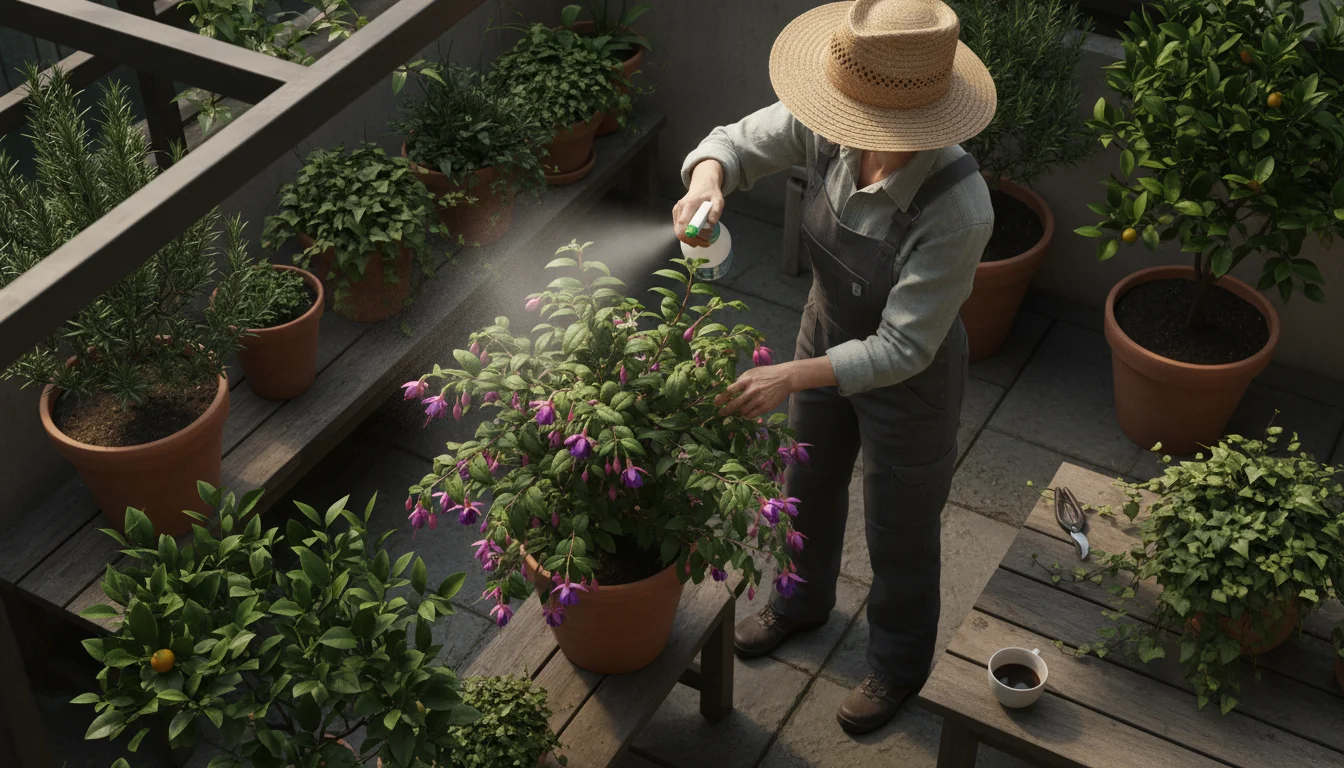
Insecticidal Soap: A Contact Killer
Insecticidal soaps are fatty acid salts that disrupt the cell membranes of soft-bodied insects, causing dehydration and death. They are effective against aphids, mealybugs, whiteflies, thrips, and spider mites. These soaps have low toxicity to humans and pets and break down quickly in the environment.
- Choose: Use a commercial insecticidal soap product, as homemade dish soap solutions can contain detergents or additives harmful to plants.
- Apply: Spray plants thoroughly, ensuring complete coverage, especially on leaf undersides where pests hide.
- Repeat: Reapply every 5-7 days for two to three weeks until the infestation is under control.
- Timing: Apply in the evening or early morning to avoid rapid drying and potential leaf burn.
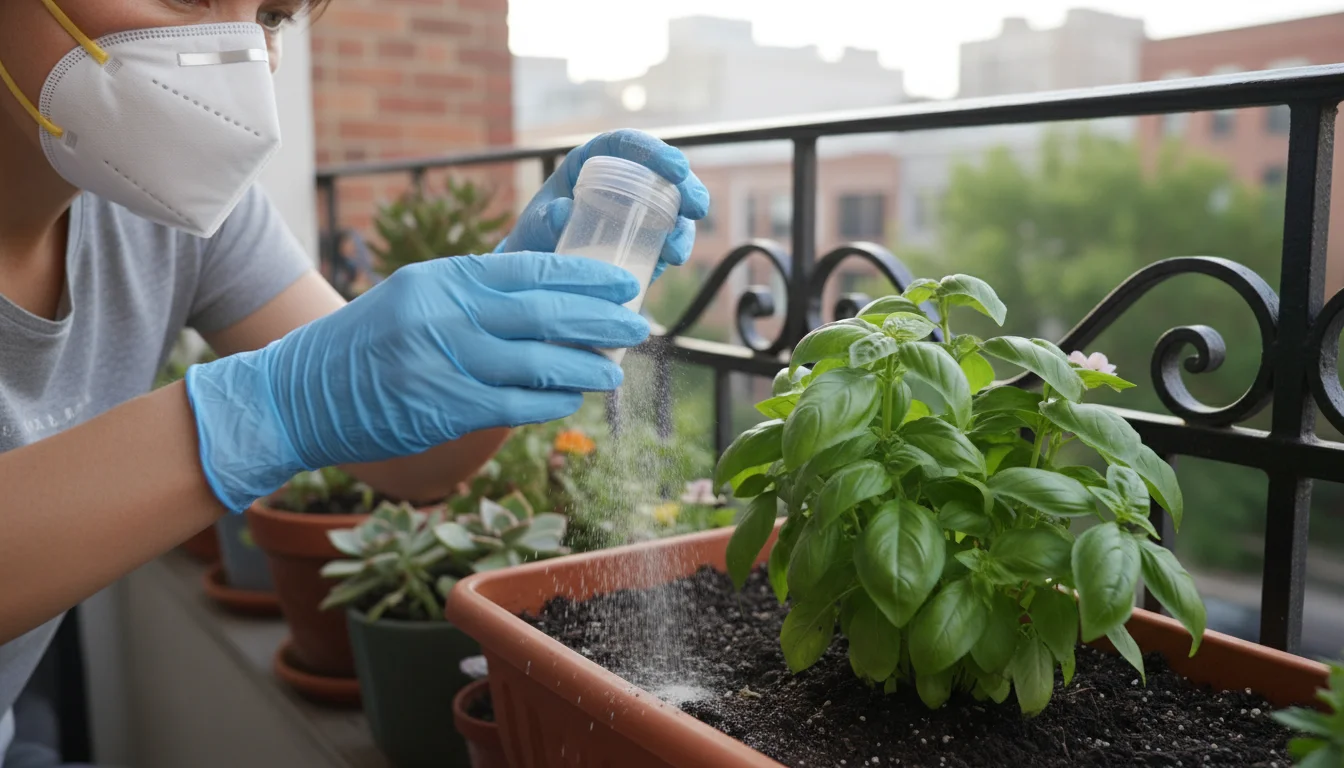
Diatomaceous Earth (DE): A Natural Desiccant
Food-grade diatomaceous earth is a fine powder made from fossilized diatoms. Its microscopic sharp edges cut the exoskeletons of crawling insects, causing them to dehydrate and die. It works on slugs, snails, ants, earwigs, and fungus gnat larvae.
- Application: Sprinkle a thin layer directly onto the soil surface to control fungus gnat larvae or crawling pests. You can also dust it lightly onto foliage if necessary.
- Effectiveness: DE loses effectiveness when wet, so reapply after watering or rain.
- Caution: Wear a mask when applying DE to avoid inhaling the fine dust, as it can irritate lungs.
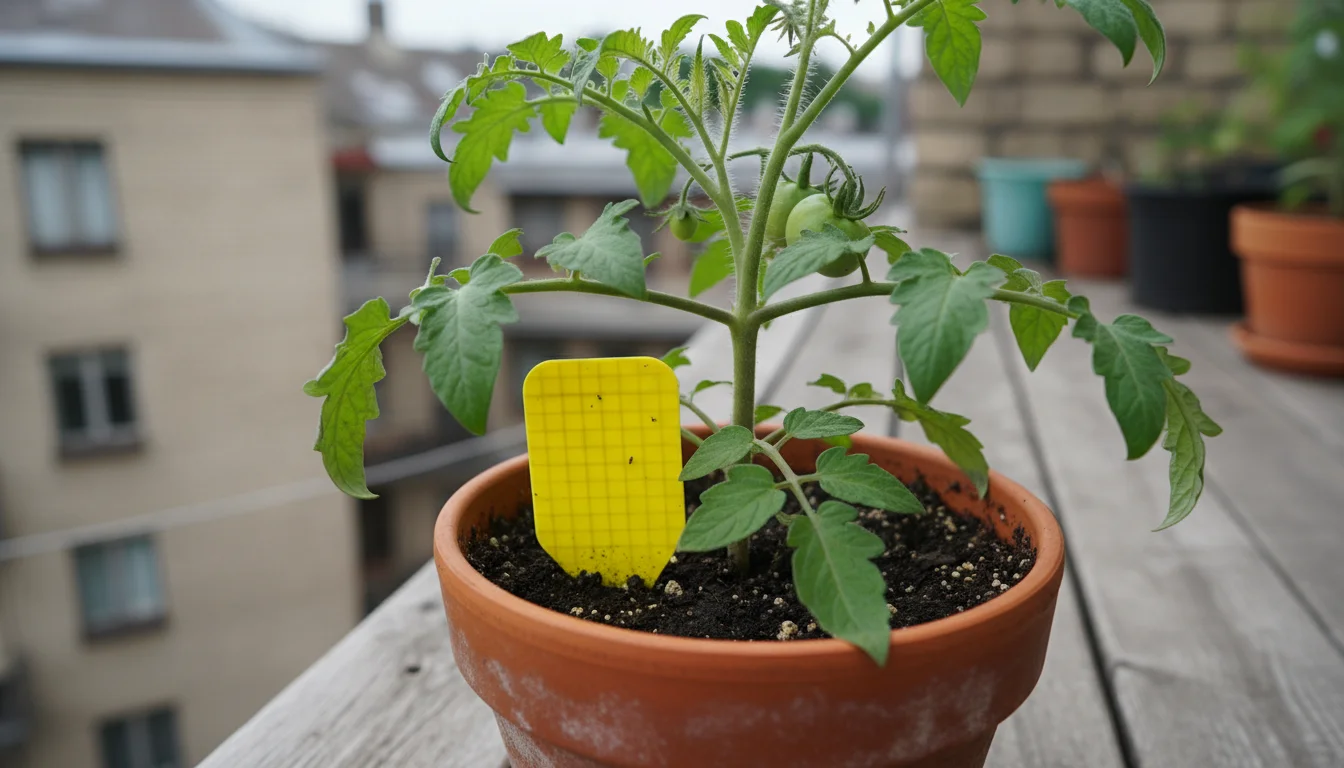
Sticky Traps: Monitoring and Catching
Yellow sticky traps attract flying insects like whiteflies, fungus gnats, and winged aphids. They serve as an excellent monitoring tool to assess pest presence and population levels. For small infestations, they can also help reduce pest numbers. Place them near affected plants, but ensure they do not accidentally trap beneficial insects if you are using them.
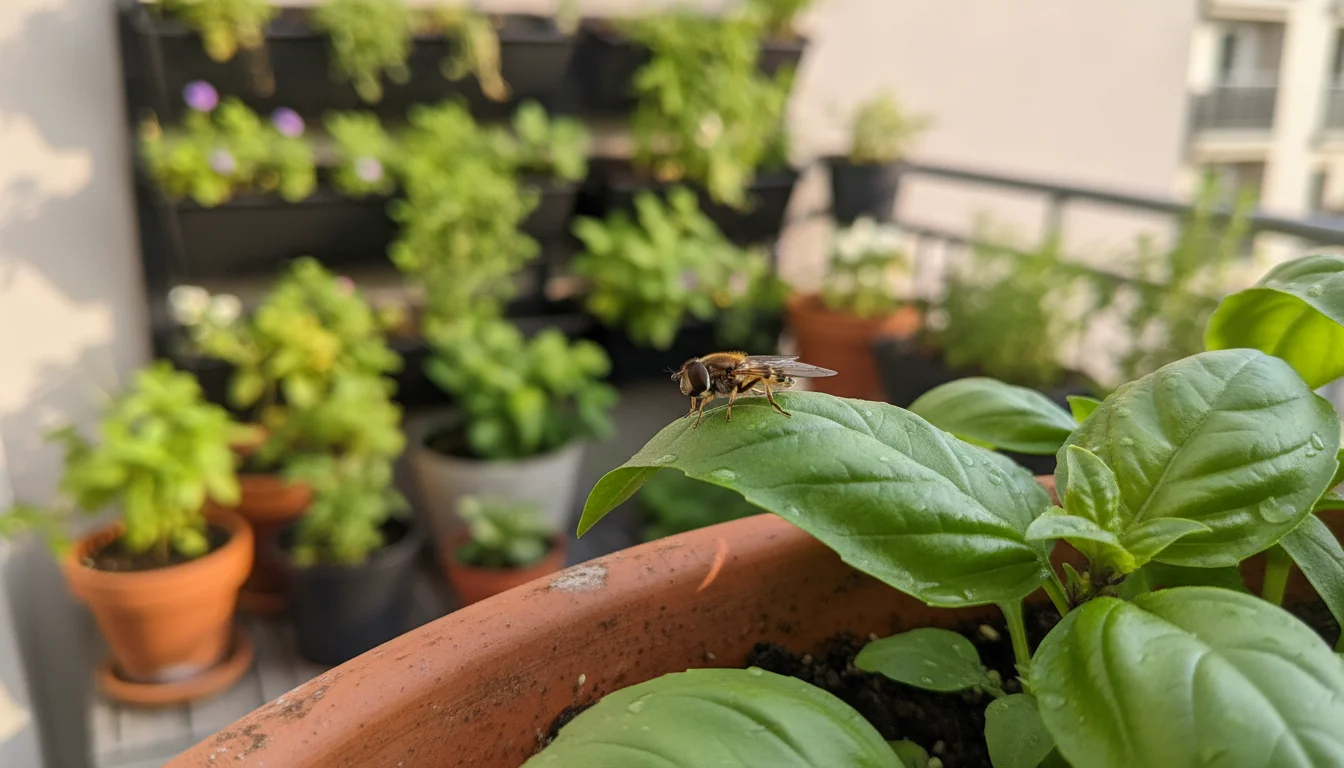
Beneficial Insects: Your Garden’s Natural Allies
In a balanced ecosystem, nature provides its own pest controllers. Encouraging beneficial insects to visit or reside in your container garden is a powerful strategy in natural pest control. These tiny heroes prey on common garden pests, reducing the need for direct intervention. This approach truly embodies the spirit of natural gardening.
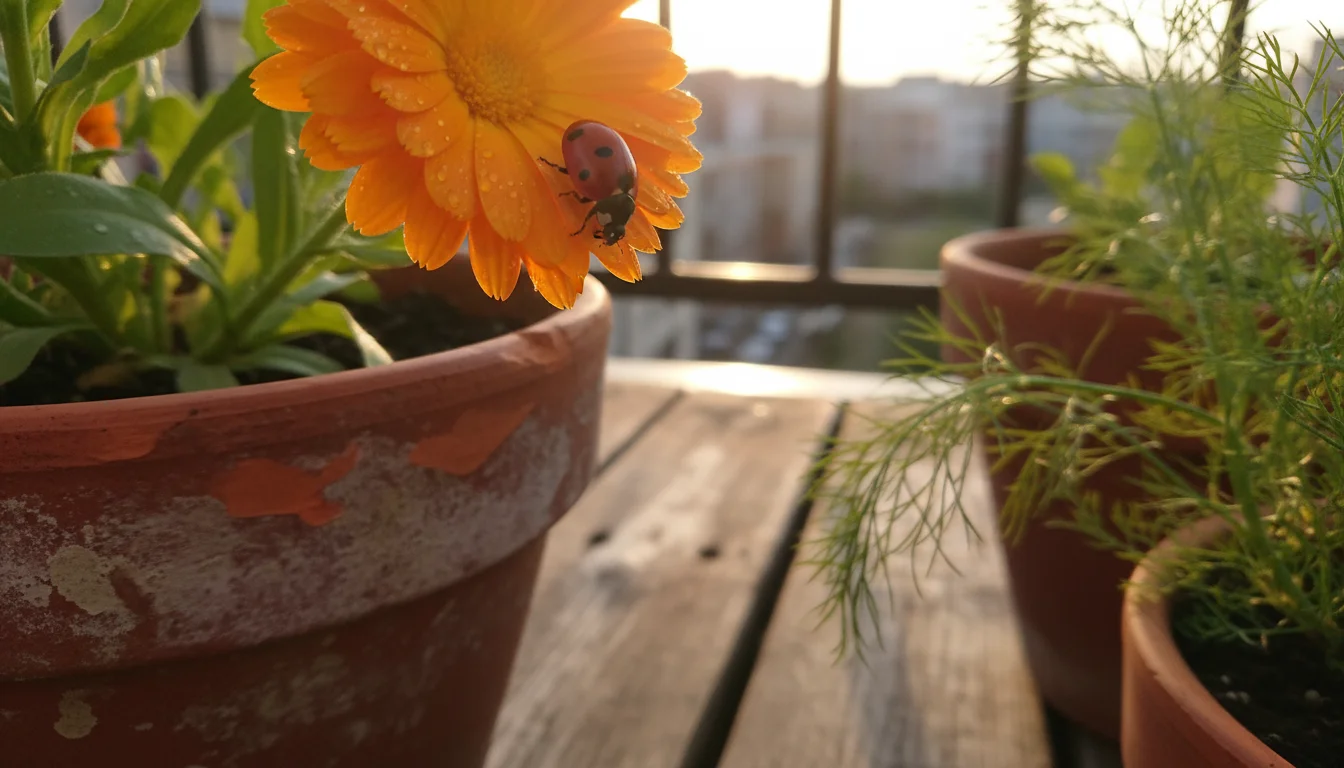
Ladybugs (Lady Beetles)
Both adult ladybugs and their alligator-like larvae are voracious predators of aphids, mealybugs, spider mites, and other soft-bodied insects. You can purchase ladybug larvae or adults, but it is often more effective to attract them naturally by planting pollen and nectar-rich flowers like dill, fennel, calendula, and cosmos. Release purchased ladybugs in the evening after watering your plants, giving them a source of hydration.
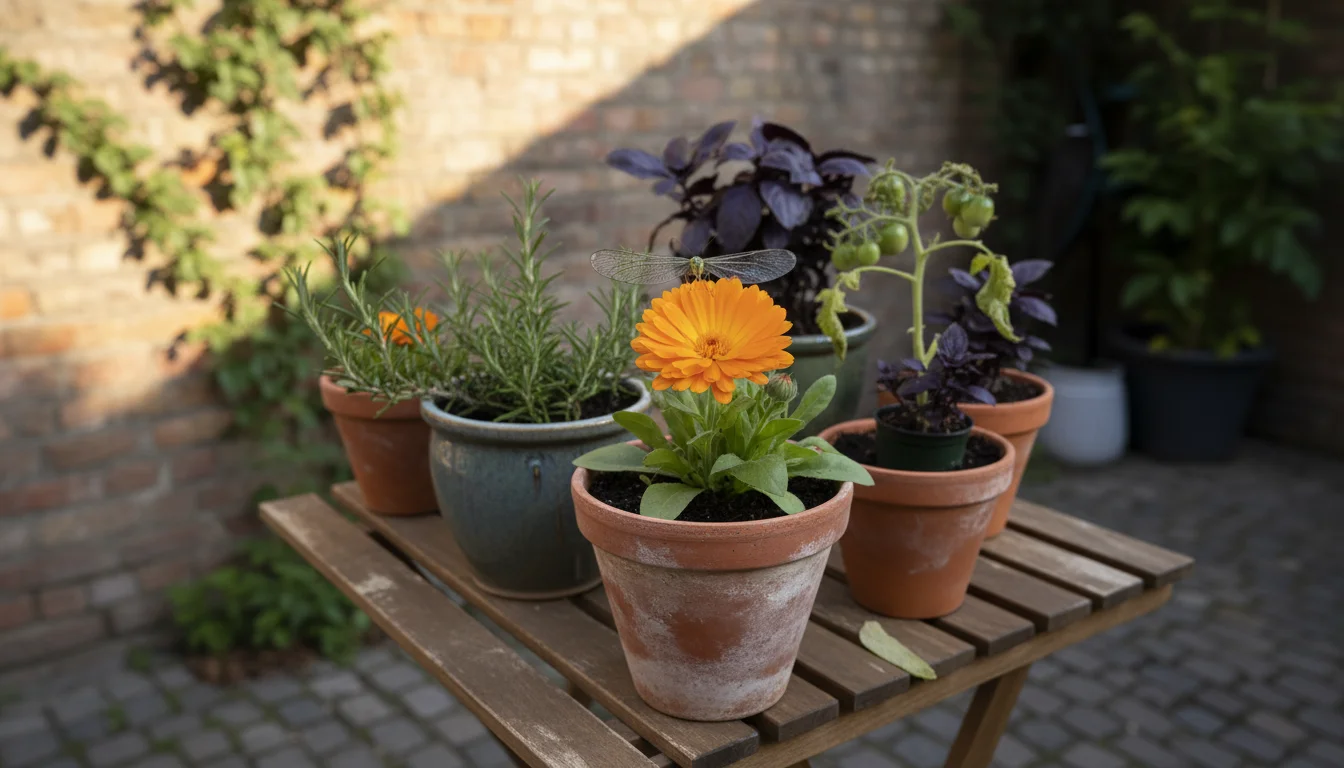
Lacewings
Green lacewing larvae, often called “aphid lions,” have formidable appetites for aphids, thrips, mealybugs, and whiteflies. Adults feed on nectar and pollen, so planting flowers that provide these resources attracts them. You can also purchase lacewing eggs to release in your garden. Cornell Garden-Based Learning offers resources on attracting beneficial insects.
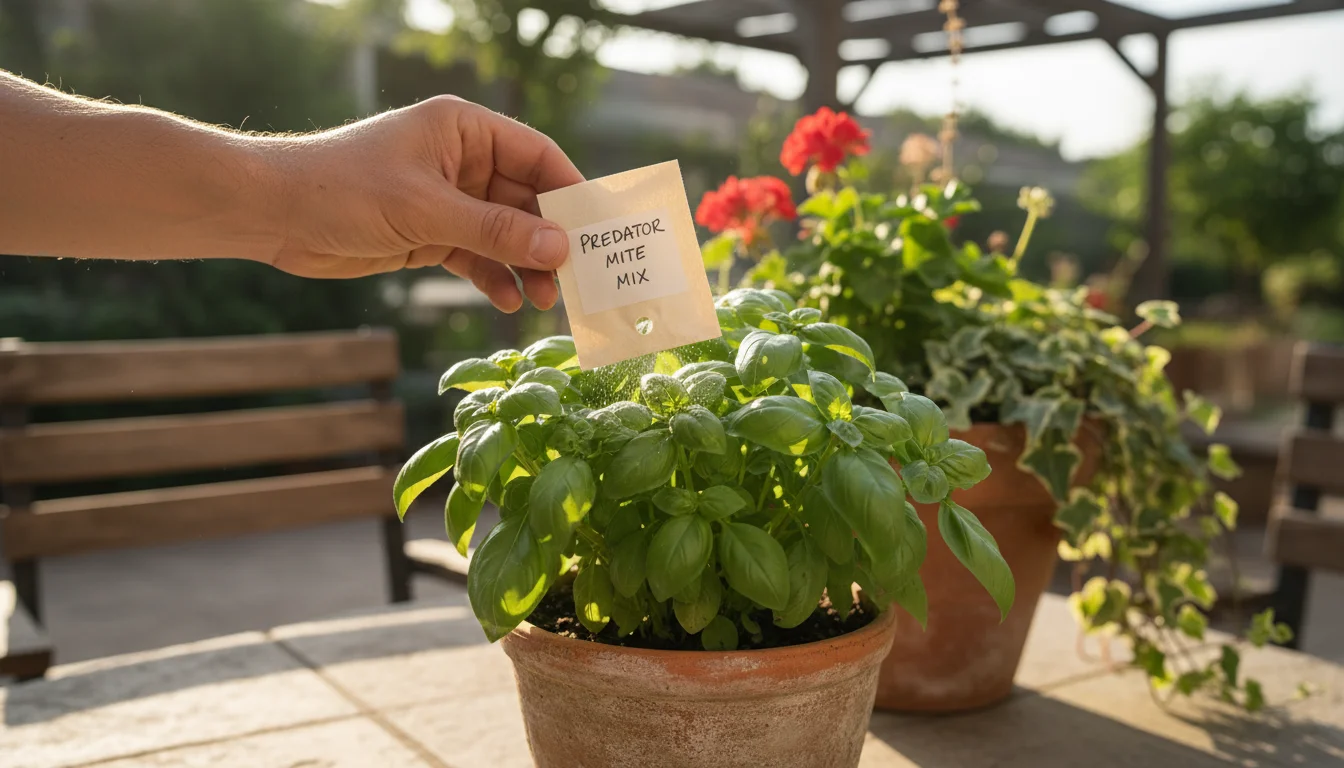
Predatory Mites
Specific species of predatory mites prey on pest mites, especially spider mites. These beneficial mites are often smaller than their prey and move more rapidly. Releasing predatory mites is a targeted biological control method particularly useful for ongoing spider mite problems in enclosed environments or specific containers.
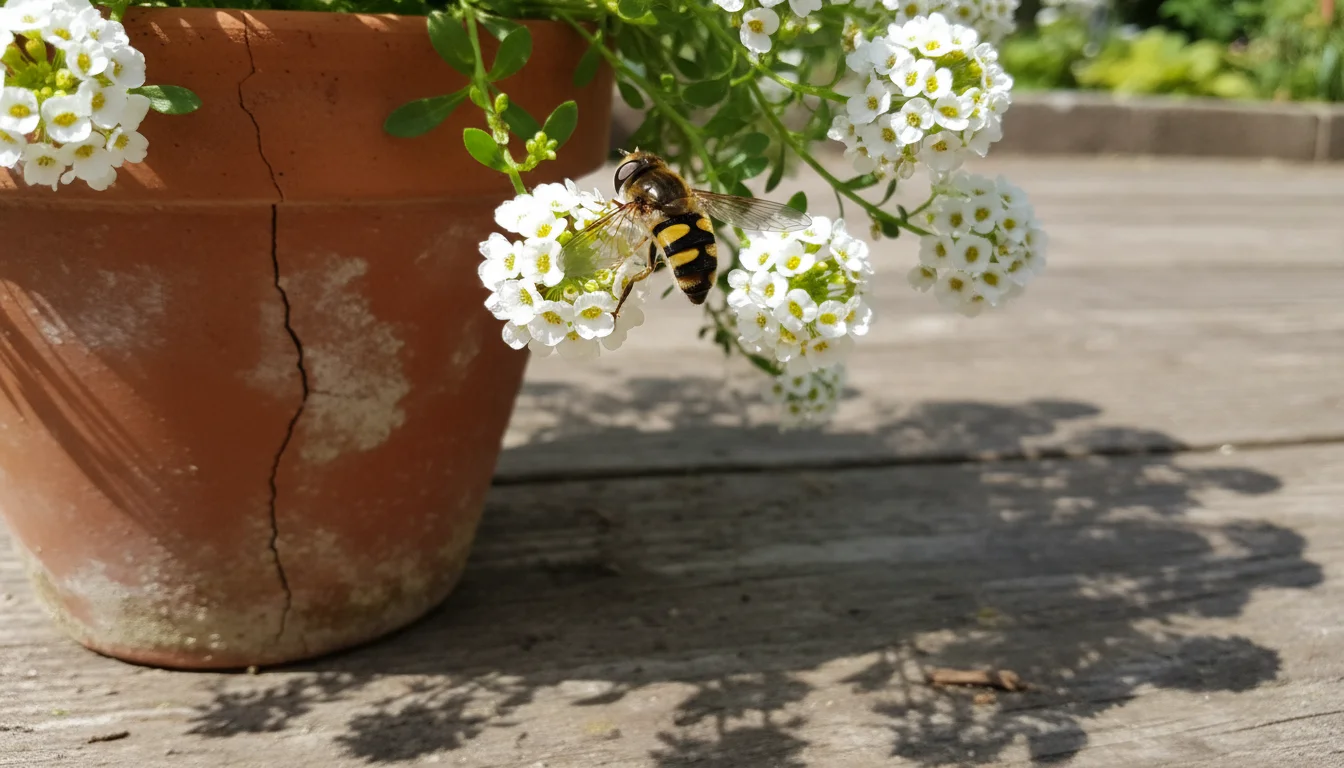
Hoverflies (Syrphid Flies)
Adult hoverflies resemble small bees or wasps but are harmless. Their larvae, however, are significant predators of aphids. You can attract hoverflies by planting flowers like sweet alyssum, dill, and various daisies.
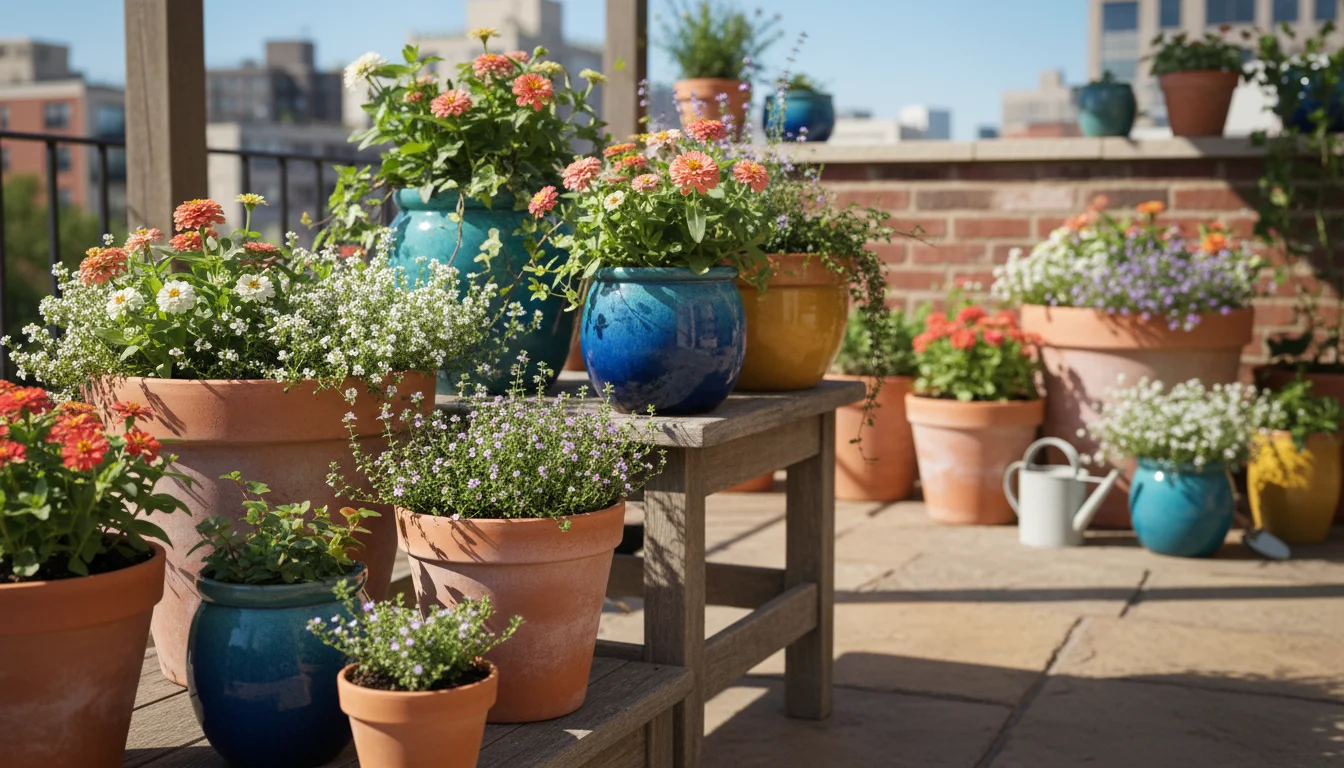
Encouraging Beneficials
To make your container garden a welcoming habitat for these allies:
- Provide Food: Plant a diverse array of small-flowered plants that provide nectar and pollen.
- Offer Water: A shallow dish of water with pebbles for landing spots gives them a drink.
- Avoid Broad-Spectrum Pesticides: Even “organic” pesticides can harm beneficial insects. Use targeted treatments only when absolutely necessary.
- Create Shelter: Some beneficials appreciate small patches of undisturbed foliage or ground cover.
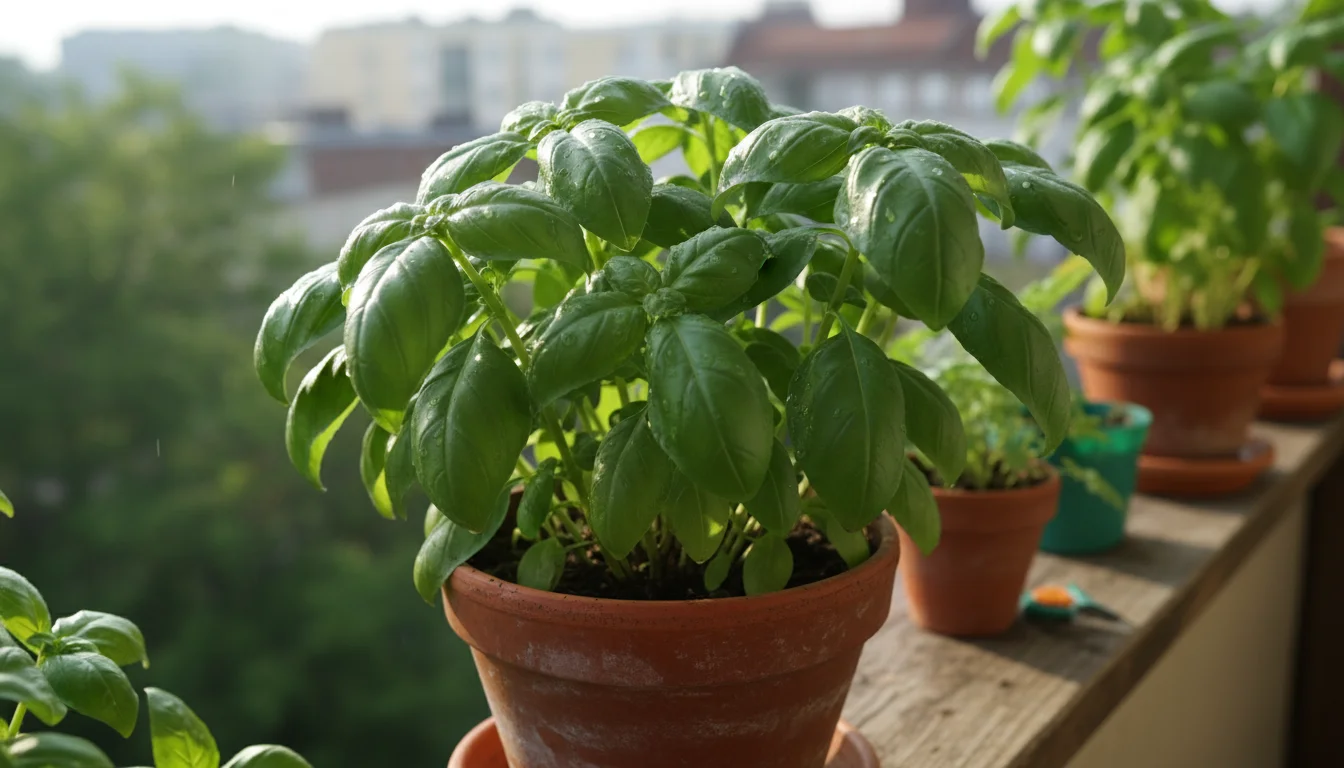
Building Plant Resilience Through Optimal Care
A strong, healthy plant naturally resists pests. Just like humans, plants with a robust immune system are less susceptible to illness. By providing ideal growing conditions, you empower your plants to defend themselves, making them less attractive targets for pests. This holistic approach is fundamental to effective natural gardening and organic pest control.
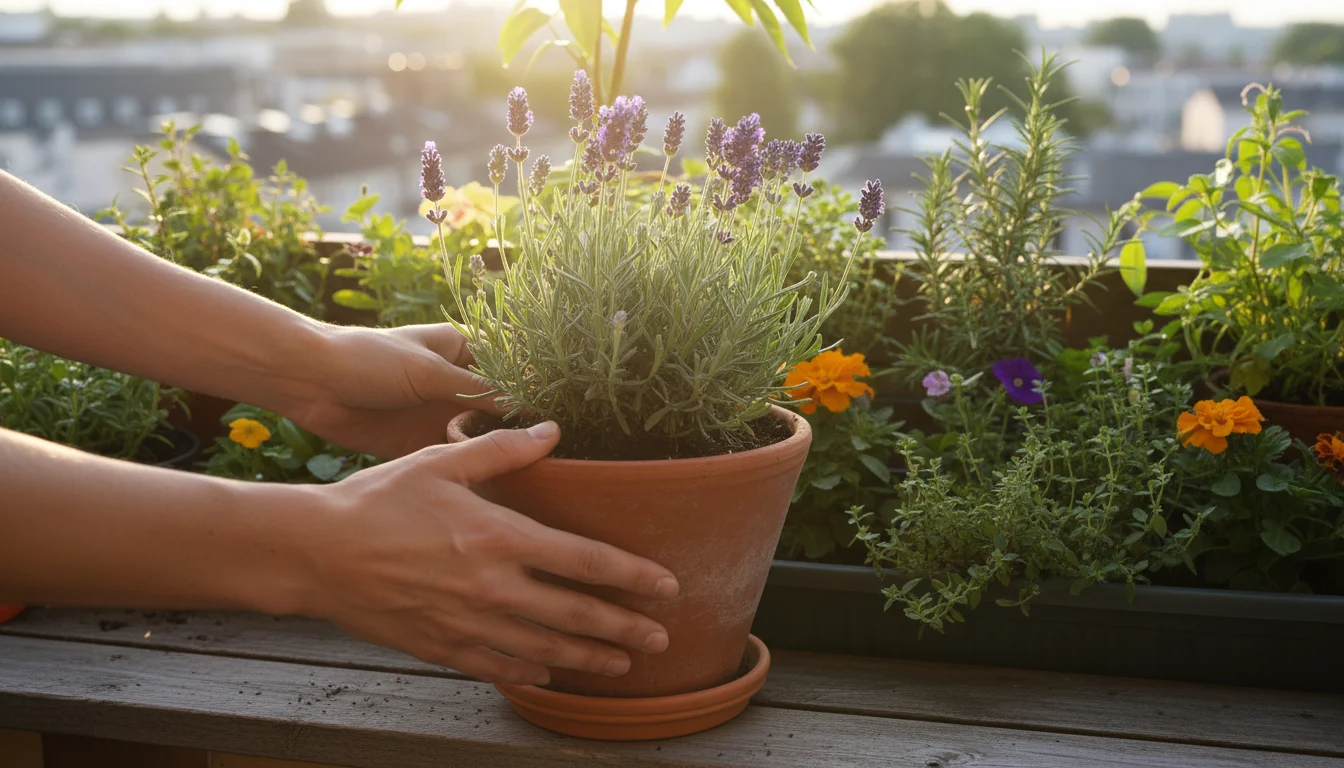
The Right Plant in the Right Place
Matching a plant’s needs (light, water, humidity) to your available conditions minimizes stress. A plant struggling in too much shade or too little water becomes weakened and vulnerable. Research your plant’s specific requirements and choose locations in your container garden that meet them. This foundational step reduces stress and dramatically improves a plant’s natural defenses.
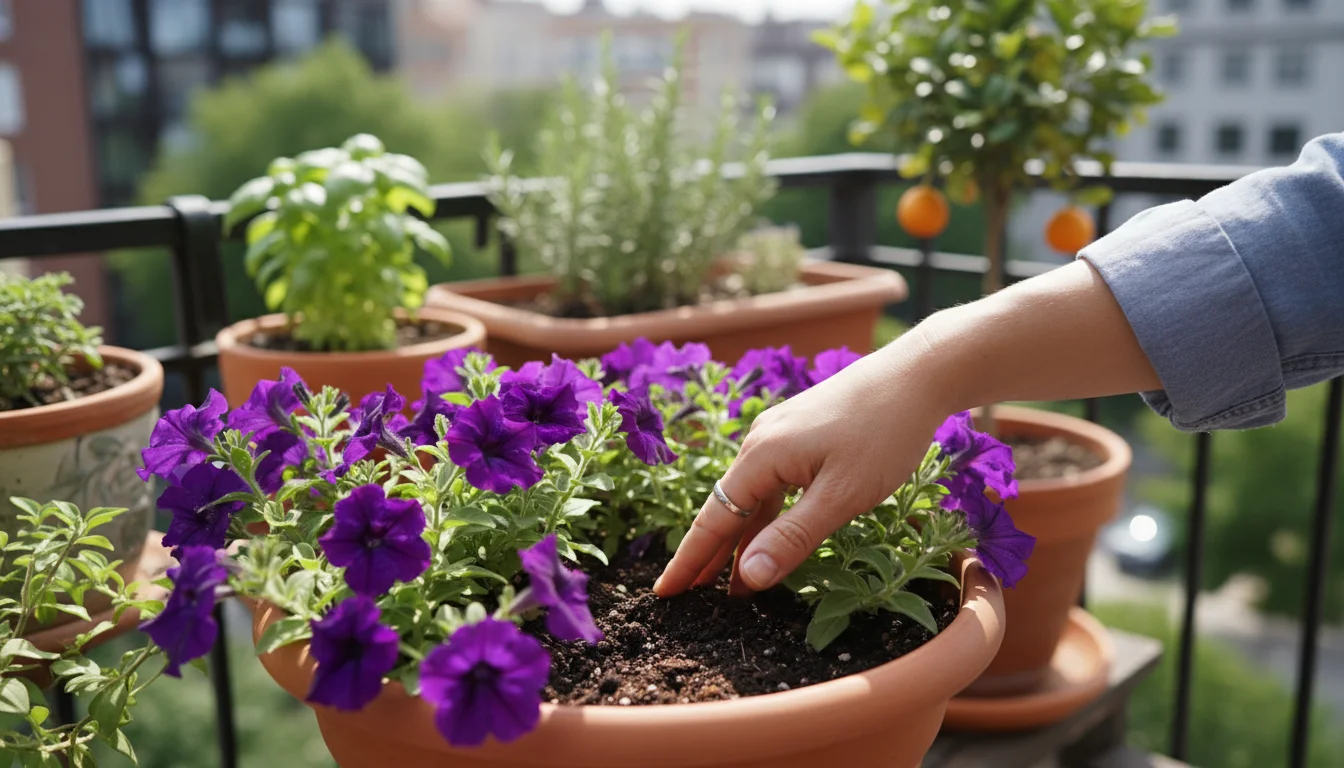
Optimal Watering Practices
As discussed earlier, consistent, appropriate watering is vital. Overwatering can lead to root rot and fungus gnats, while underwatering stresses plants and attracts spider mites.
| Plant Type | Watering Frequency (General Guide) | Indicator for Watering |
|---|---|---|
| Most Herbs & Vegetables | Every 1-3 days (depending on size/weather) | Top inch of soil feels dry |
| Flowering Annuals | Daily to every other day (during peak bloom) | Top inch of soil feels dry |
| Succulents & Cacti | Every 2-4 weeks (or longer) | Soil completely dry, leaves might slightly wrinkle |
| Tropical Foliage Plants | Every 3-7 days | Top 1-2 inches of soil feel dry |
Always check the soil moisture with your finger before watering. Your plant’s pot size, environmental conditions, and the specific plant type all influence watering needs. Water thoroughly until it drains from the bottom, then empty any excess water from the saucer.
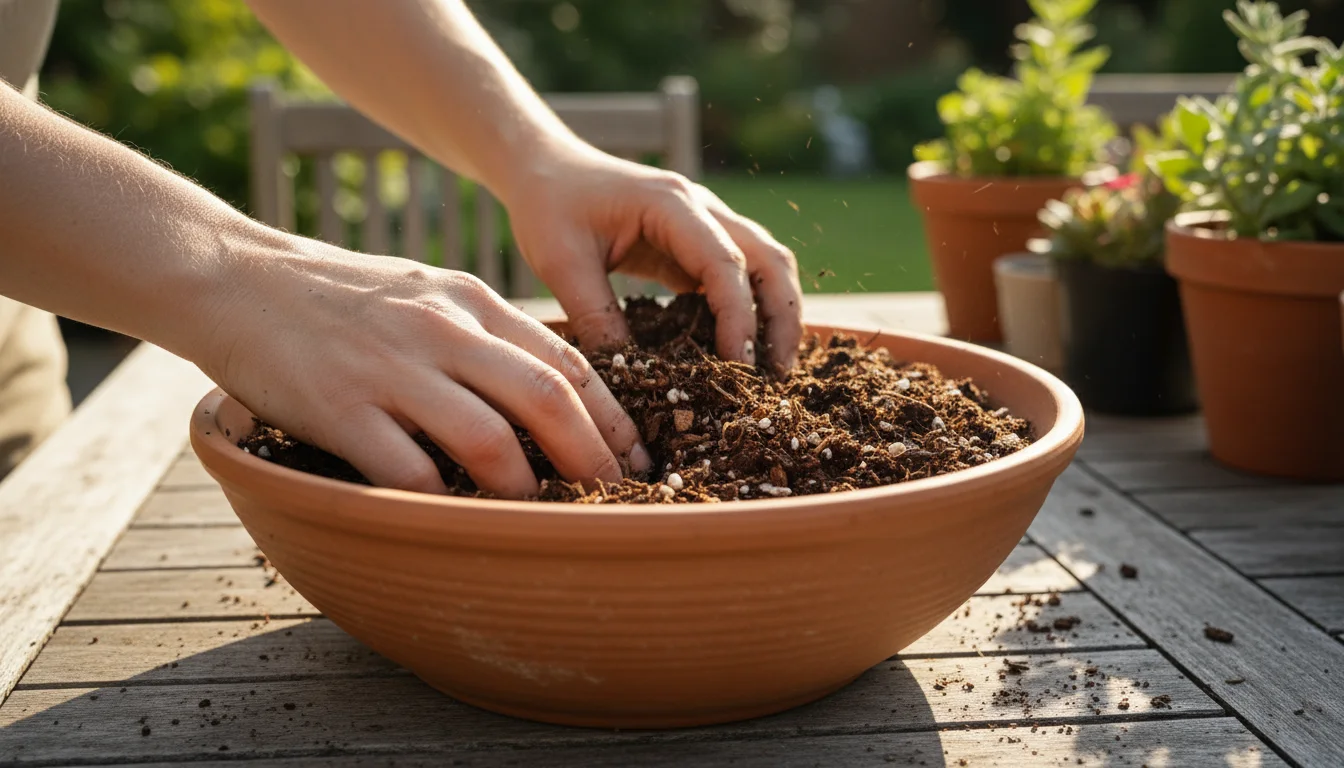
Nutrient-Rich, Peat-Free Potting Mix
Healthy roots anchor a healthy plant. Use a high-quality, well-draining, peat-free potting mix. Peat-free mixes offer a sustainable alternative to traditional peat-based options, reducing environmental impact while still providing excellent structure. Look for mixes containing coco coir, perlite, vermiculite, and compost. A good mix promotes strong root development and prevents waterlogging, a common cause of plant stress and vulnerability. Consider refreshing your potting mix annually or biennially, as nutrients deplete and the structure degrades over time.
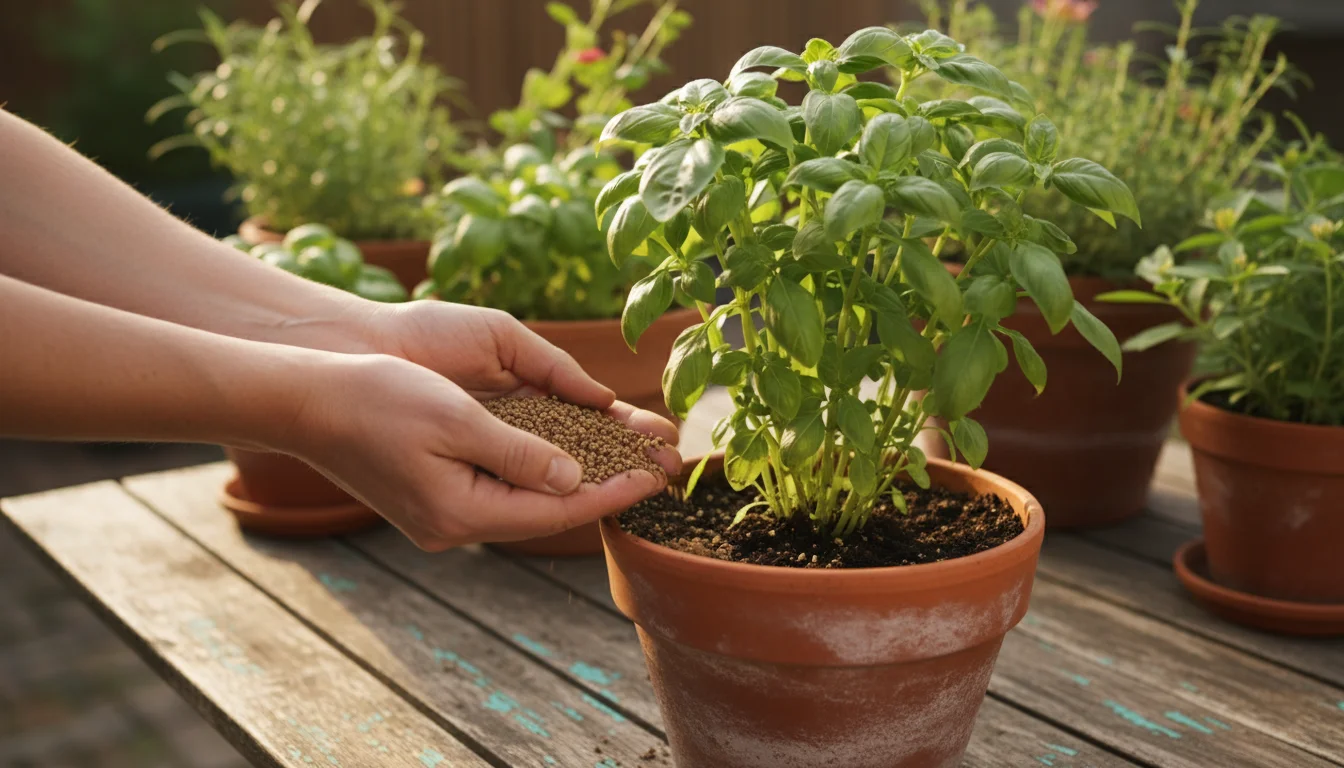
Consistent, Balanced Fertilization
Feed your plants with a balanced, organic fertilizer during their active growing season. Avoid over-fertilizing, especially with high-nitrogen fertilizers, as this can lead to soft, sappy new growth that aphids particularly love. Organic options like worm castings, compost tea, or slow-release granular organic fertilizers provide nutrients gradually, supporting steady, strong growth. Always follow package directions for application rates and frequency. The RHS provides comprehensive advice on feeding plants.
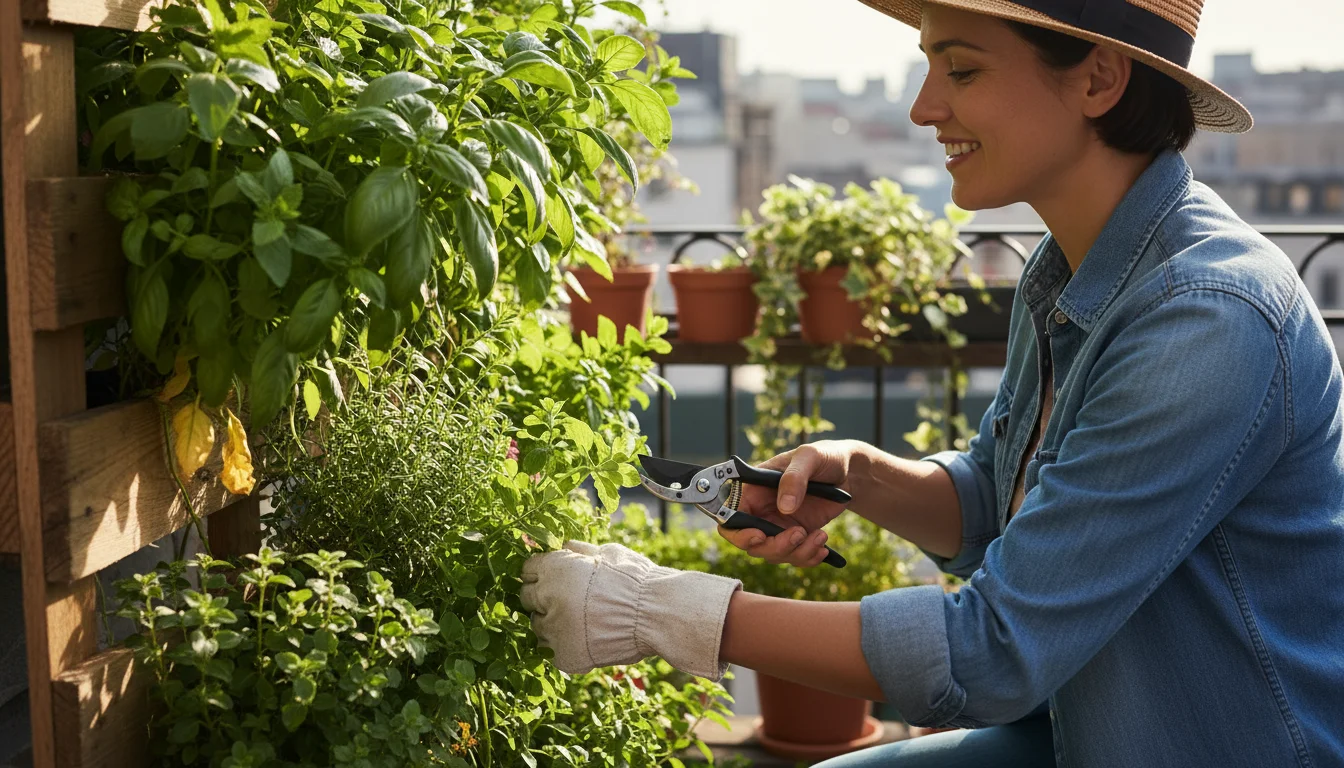
Pruning for Health and Airflow
Regular pruning removes dead or yellowing leaves, which can harbor pests or fungal spores. It also improves air circulation within the plant canopy, reducing humidity and making it less attractive to pests like spider mites and whiteflies. Use clean, sharp pruners for all cuts to prevent disease transmission and promote quick healing.
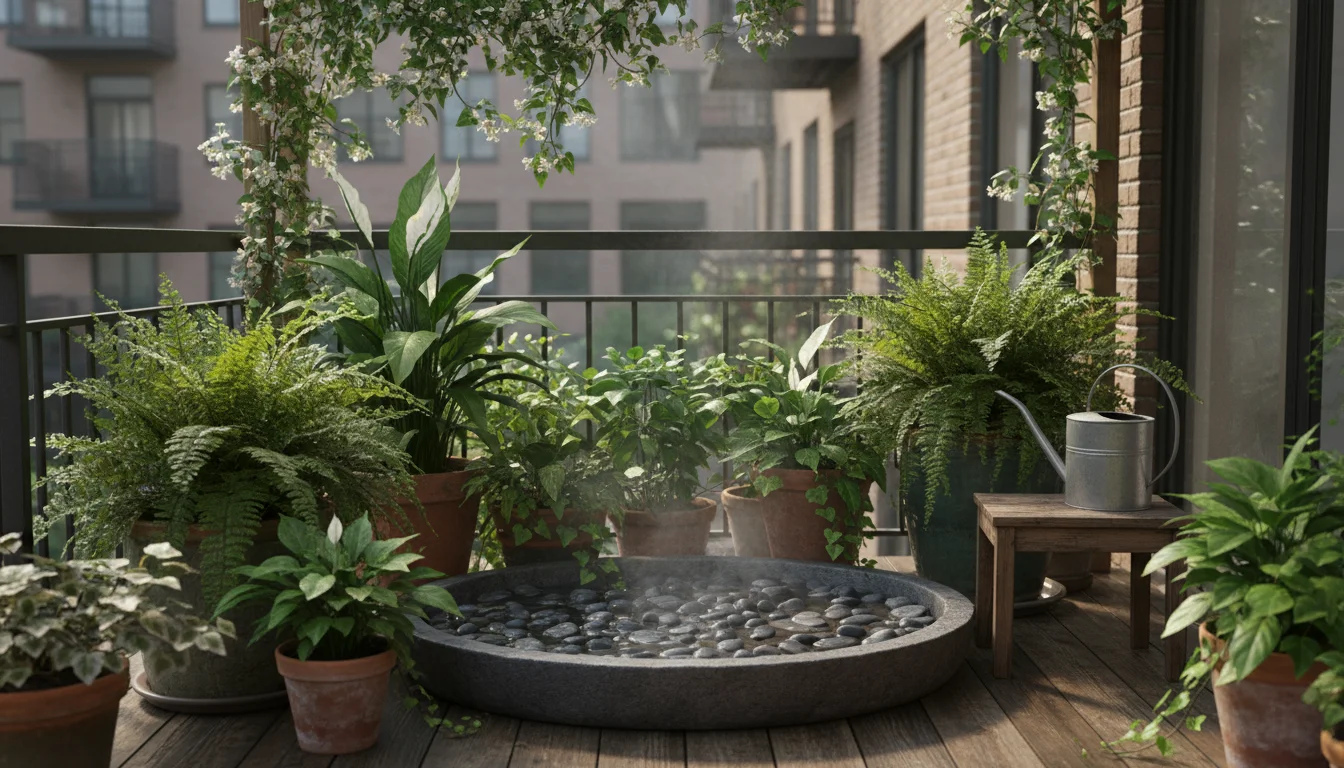
Environmental Considerations
Monitor humidity and temperature. Many indoor plants suffer from low humidity, making them prone to spider mites. Consider grouping plants or using a pebble tray to increase local humidity. For outdoor containers, protect plants from extreme heat or sudden cold snaps, which can stress them significantly.
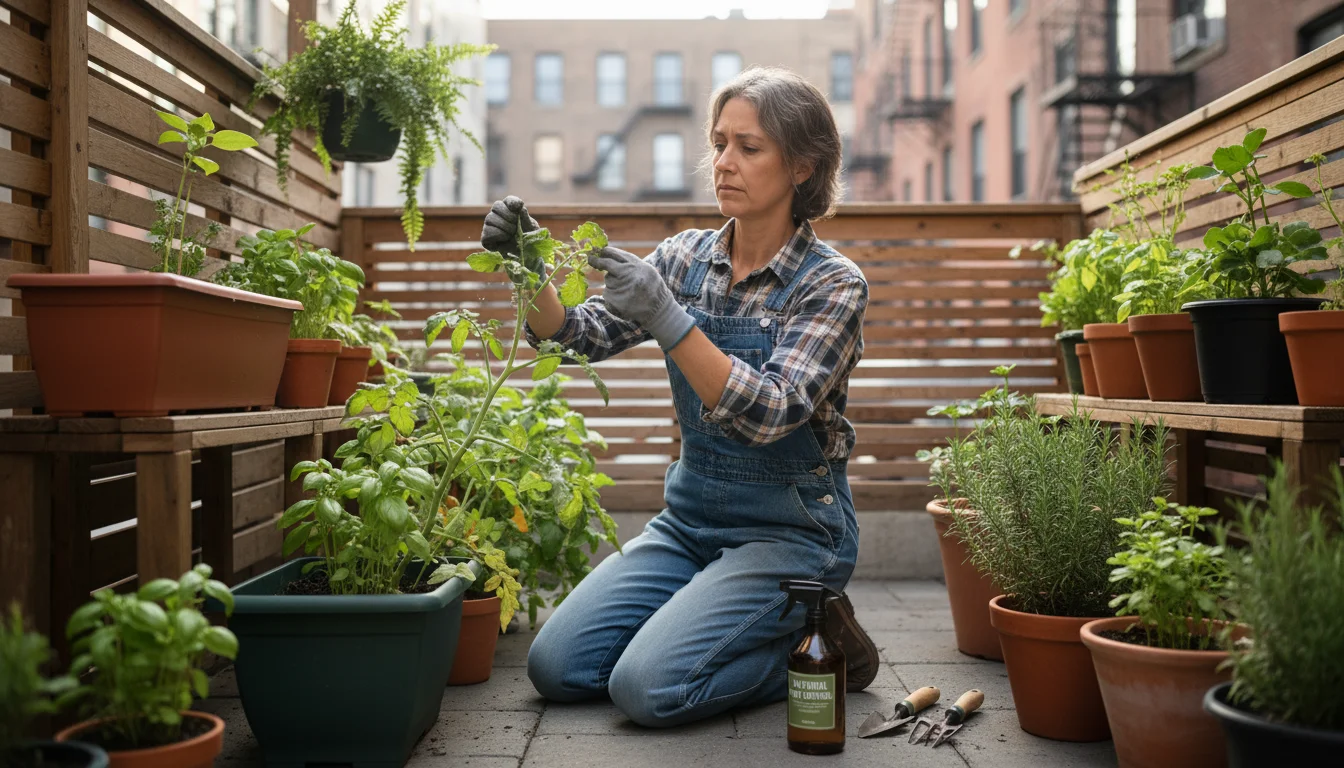
Troubleshooting Stubborn Infestations
Despite your best efforts, sometimes pests persist. When an infestation proves stubborn, you need to intensify your natural pest control strategies and remain diligent. Do not give up, consistent effort pays off.
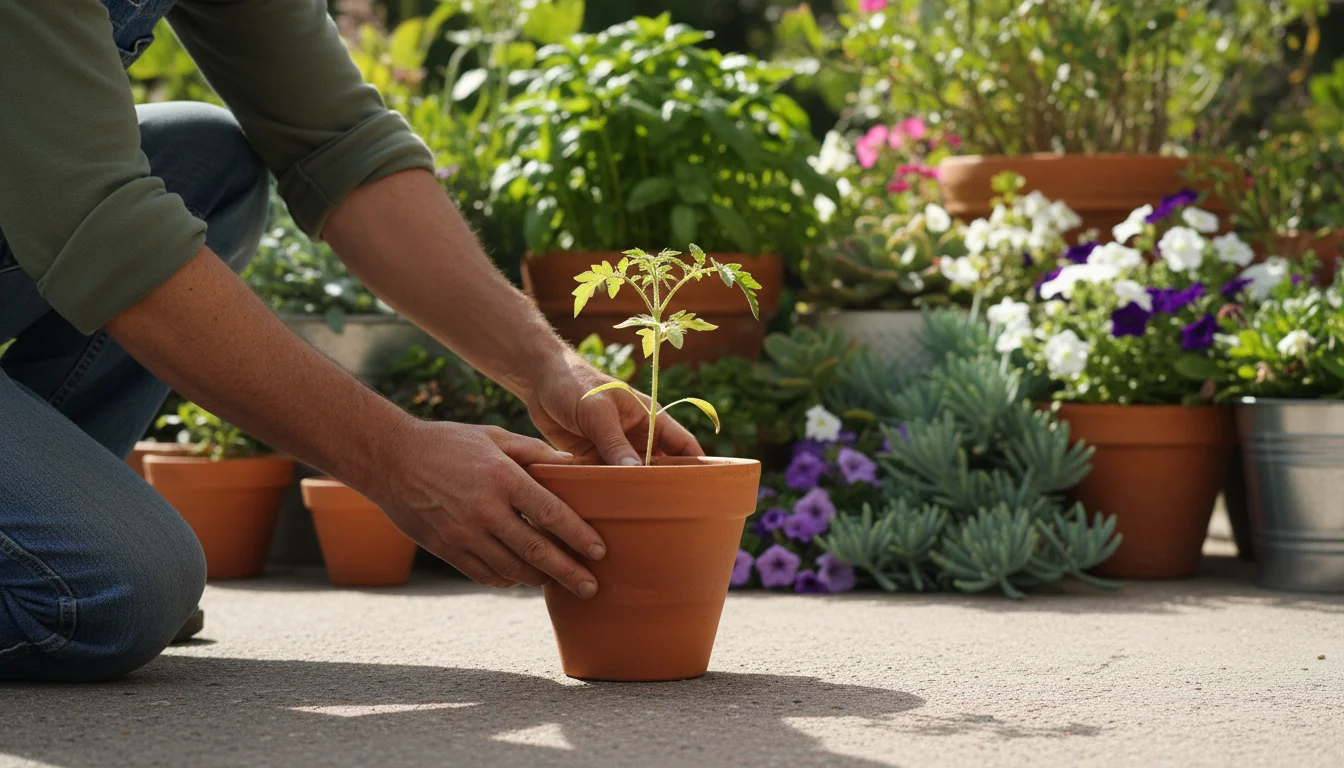
Isolate the Affected Plant
The very first step for a persistent problem is to move the infested plant away from your other containers. This prevents the pests from spreading and allows you to treat the affected plant more aggressively without impacting its neighbors.
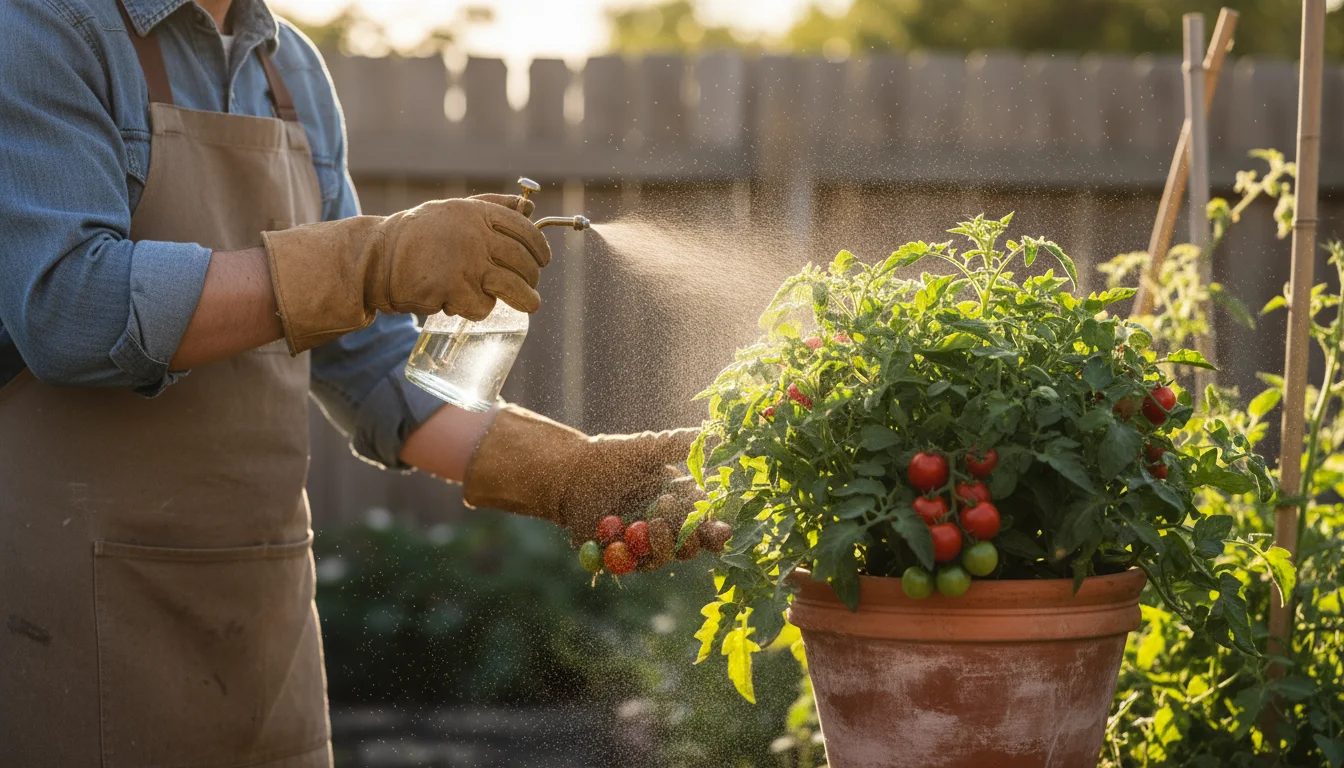
Rotate Treatments
Pests can develop resistance to a single treatment. If one method is not working, switch to another. For example, alternate between neem oil and insecticidal soap applications every few days. This multi-pronged approach disrupts pest life cycles more effectively. You could also combine a physical removal technique, like a strong water spray, with a follow-up chemical treatment like neem oil.
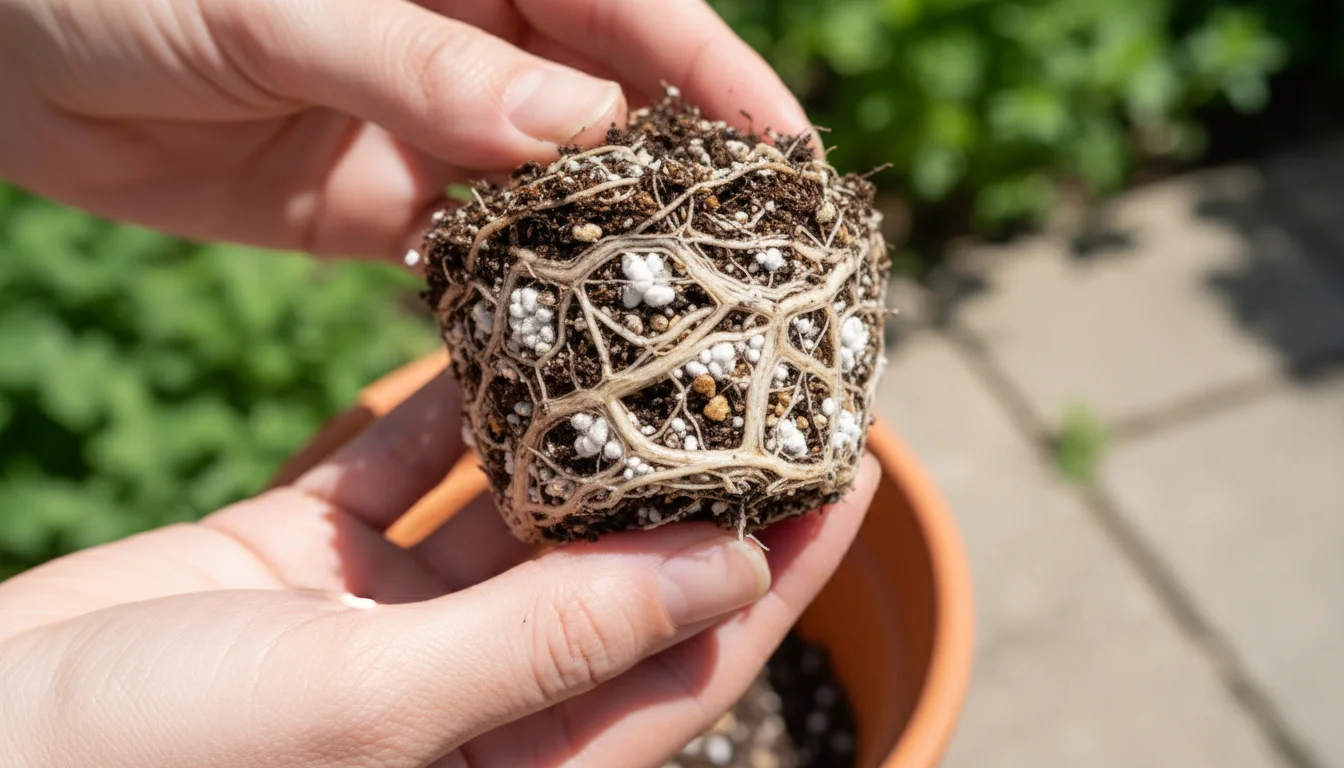
Check for Hidden Pests
Thoroughly inspect areas you might have overlooked: the very base of the plant stem at the soil line, inside unfurling new leaves, and even the pot’s drainage holes. Pests are excellent at hiding. Some pests, like root mealybugs, hide in the soil itself. If you suspect root mealybugs, carefully unpot the plant and inspect its root ball. You will see white, powdery masses on the roots.
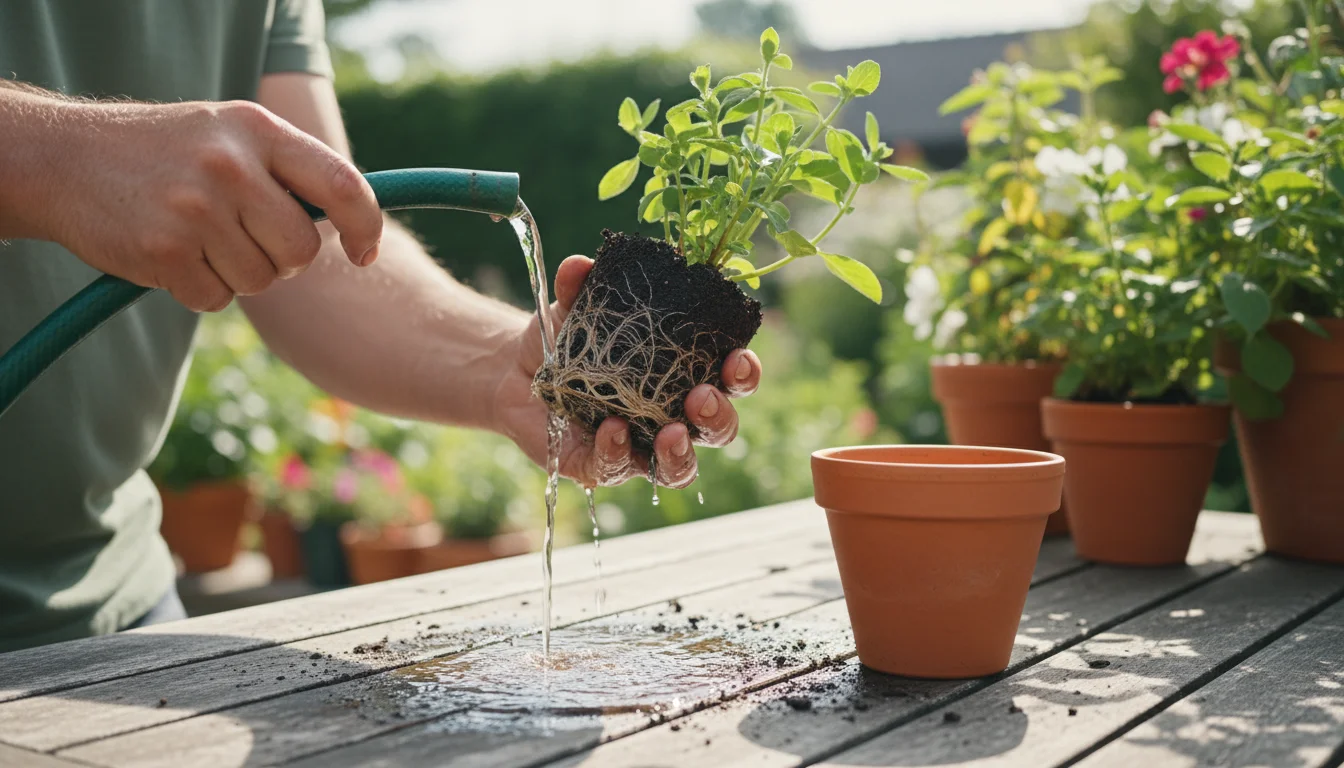
Consider Repotting
If you suspect root pests or if the soil itself seems to be a persistent source of problems (e.g., severe fungus gnat issues despite drying out), repotting might be necessary.
- Unpot: Carefully remove the plant from its container.
- Clean Roots: Gently remove as much old soil as possible, rinsing the roots under a gentle stream of water if necessary. Inspect roots for any signs of pests.
- Clean Pot: Thoroughly wash the old pot with a dilute bleach solution or warm soapy water.
- Repot: Use fresh, sterile, peat-free potting mix.
This provides a fresh start and eliminates any lingering pest eggs or larvae in the old soil.
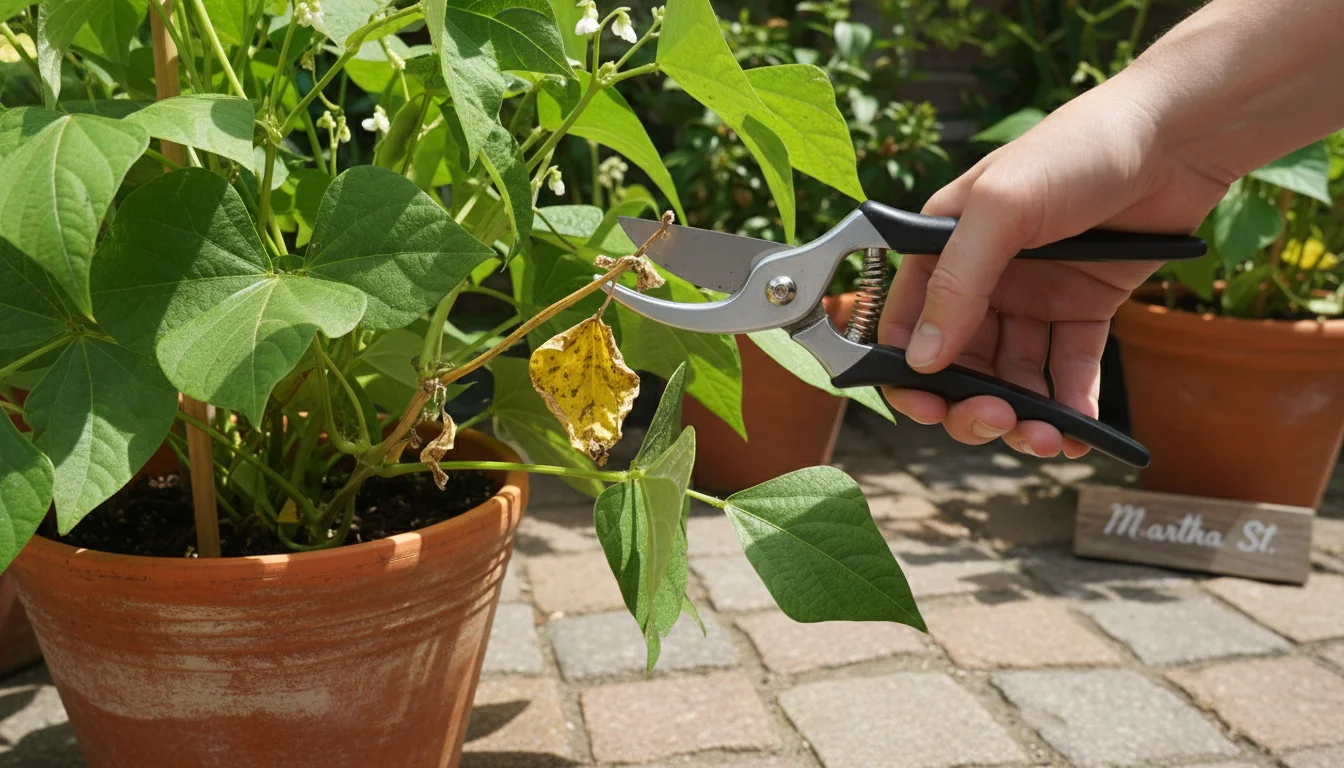
Pruning Severely Affected Areas
Sometimes, a section of the plant is too heavily infested to save. Do not hesitate to prune away severely damaged or pest-ridden branches or leaves. This removes a significant portion of the pest population and redirects the plant’s energy towards healthy new growth. Always sterilize your pruning shears before and after use.
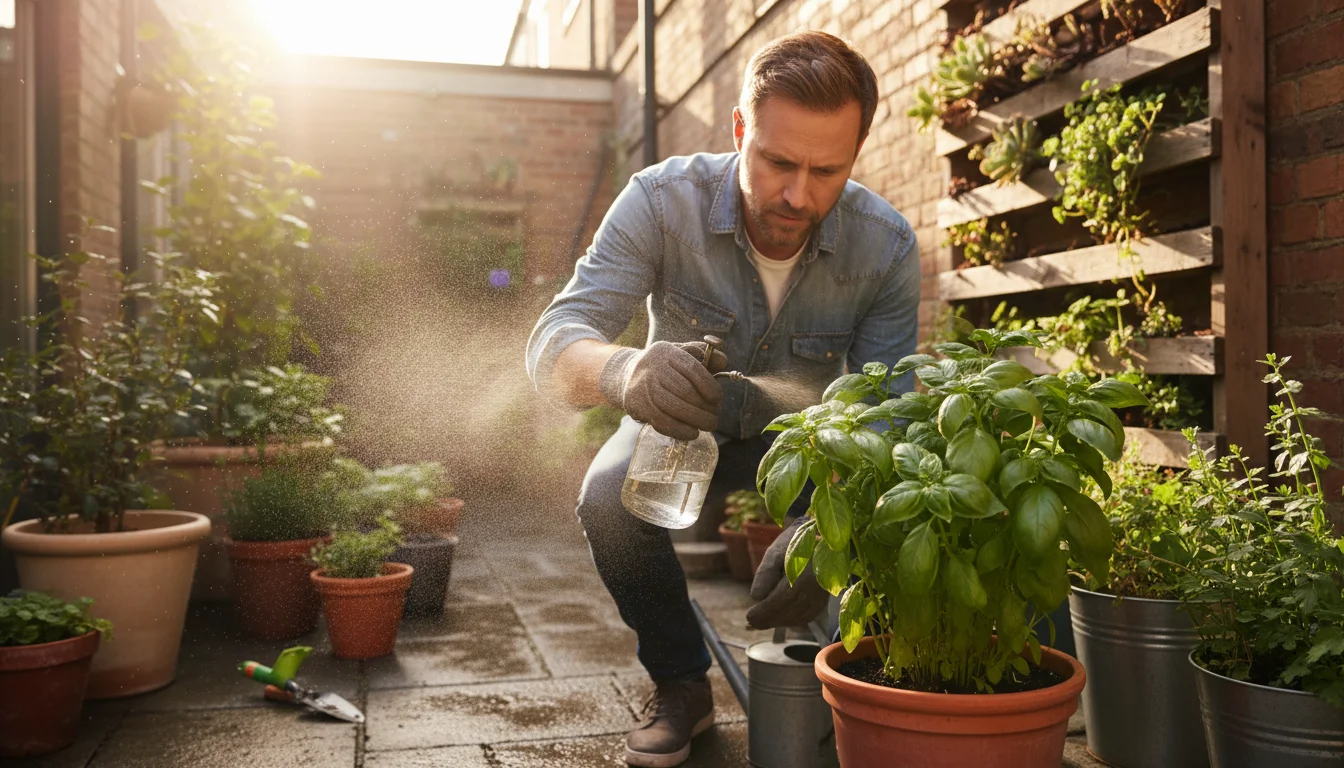
Persistence and Patience
Natural pest control often requires more patience and consistency than chemical solutions. Pests reproduce quickly, and you need to break their life cycle. This means repeated applications of treatments every 5-7 days for several weeks. Do not stop treatment just because you no longer see pests; eggs or nymphs might still be present, ready to hatch and start a new infestation. Continued vigilance is key to success in natural gardening.
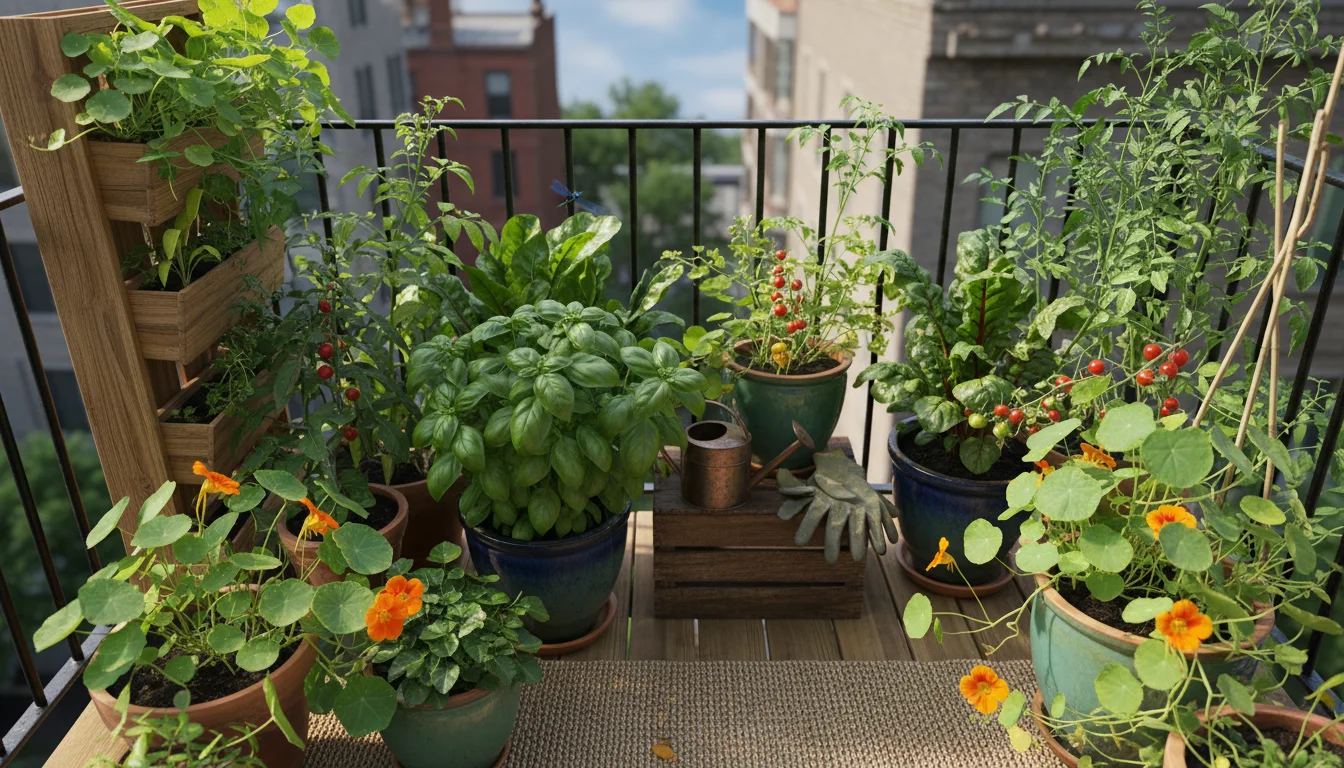
Frequently Asked Questions
What are the safest natural sprays for edible container gardens?
For edible container gardens, insecticidal soap and neem oil are excellent choices. Always ensure you use cold-pressed neem oil that is labeled for use on edible plants. Follow application instructions carefully and observe any “days to harvest” guidelines on product labels. You can also use a strong stream of water to dislodge pests from edible leaves, which is completely safe and effective for many soft-bodied insects like aphids.
How do I get rid of fungus gnats in my container garden naturally?
The most effective natural method for fungus gnats involves addressing soil moisture. Allow the top 1-2 inches of your potting mix to dry out completely between waterings, as fungus gnat larvae thrive in moist conditions. You can also sprinkle a layer of food-grade diatomaceous earth on the soil surface, which will desiccate the larvae and deter adults from laying eggs. Yellow sticky traps effectively catch adult gnats, helping to monitor and reduce their population.
Can I use essential oils for pest control in my containers?
While some essential oils (like peppermint, rosemary, or tea tree) possess insect-repelling properties, using them for pest control can be tricky. They can be phytotoxic, meaning they might burn or damage your plant’s leaves if not properly diluted and applied. Research suggests many commercially available natural pest control products already contain these oils in safe, effective concentrations. For reliable and proven natural gardening methods, stick to well-established options like neem oil, insecticidal soap, and manual removal, which have a better track record for safety and efficacy on plants.
My plants keep getting spider mites. What am I doing wrong?
Spider mites often thrive in dry, warm conditions and on stressed plants. First, check your watering routine. Are you consistently underwatering, or is the air very dry? Increase humidity around your plants by grouping them or using a pebble tray. Ensure you are inspecting leaf undersides regularly and treating promptly with insecticidal soap or neem oil. Consider introducing predatory mites for persistent problems. A healthy, well-hydrated plant in a moderately humid environment is much more resistant to spider mites.
Your container garden is a haven, and by embracing natural pest control, you ensure it remains vibrant and chemical-free. Remember, consistency in observation, proactive prevention, and swift, targeted action are your most powerful tools. Happy gardening, and enjoy your thriving, naturally protected plants!
